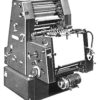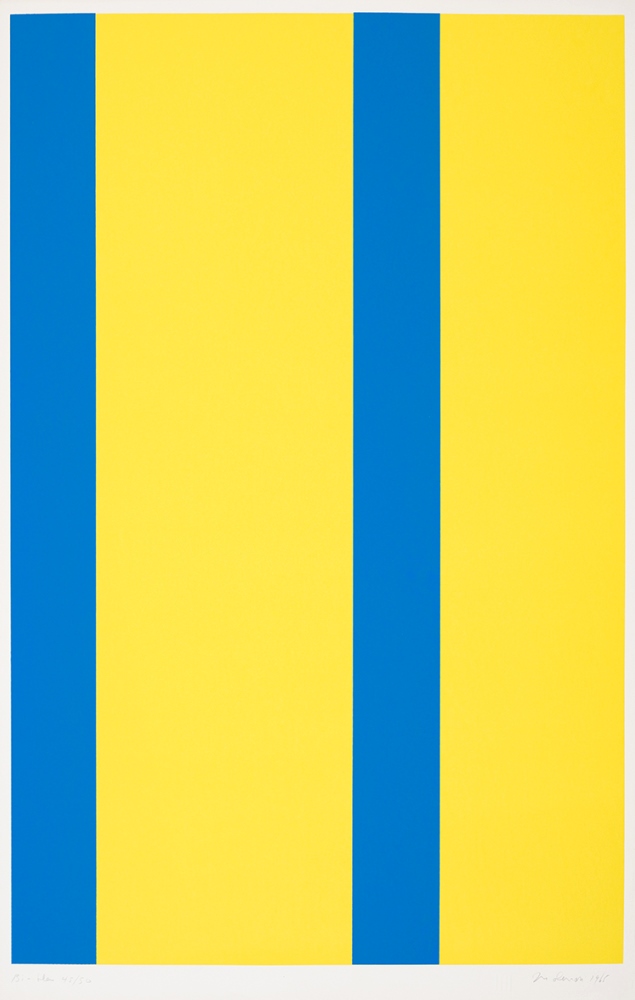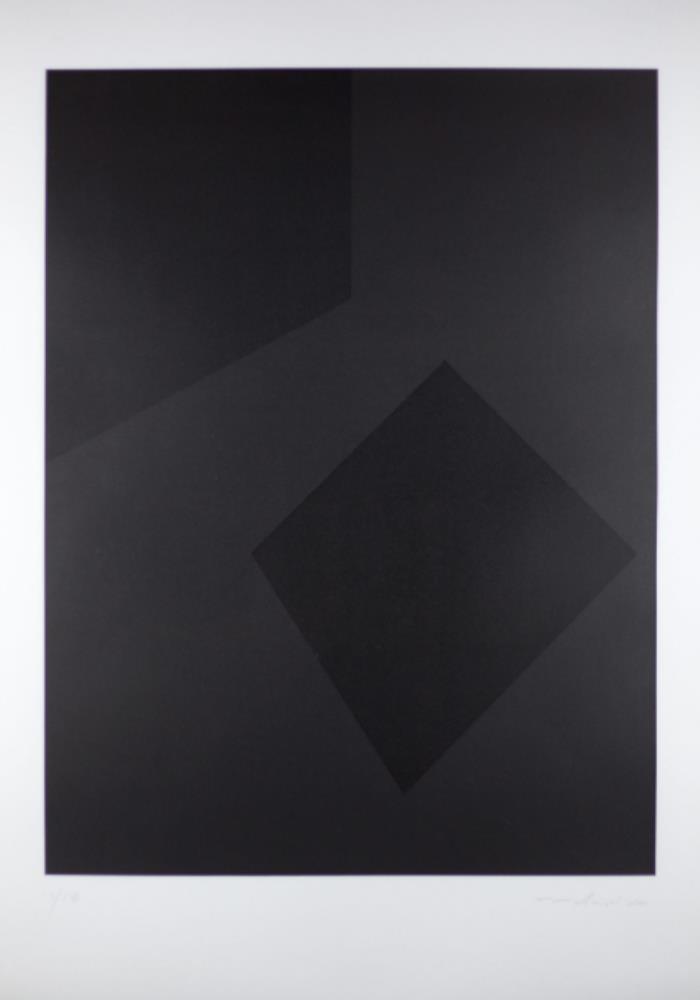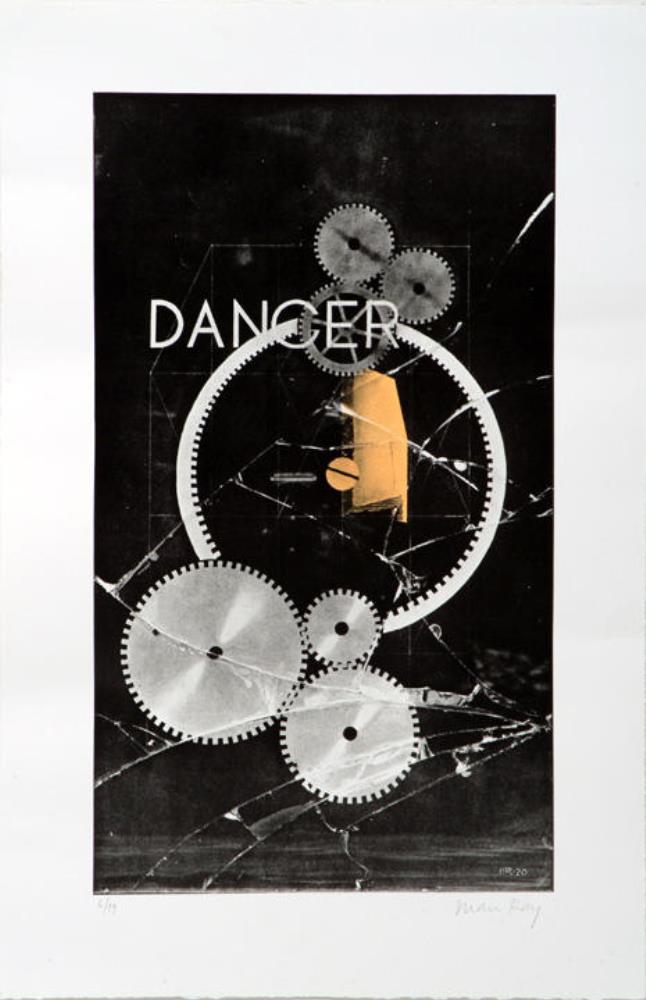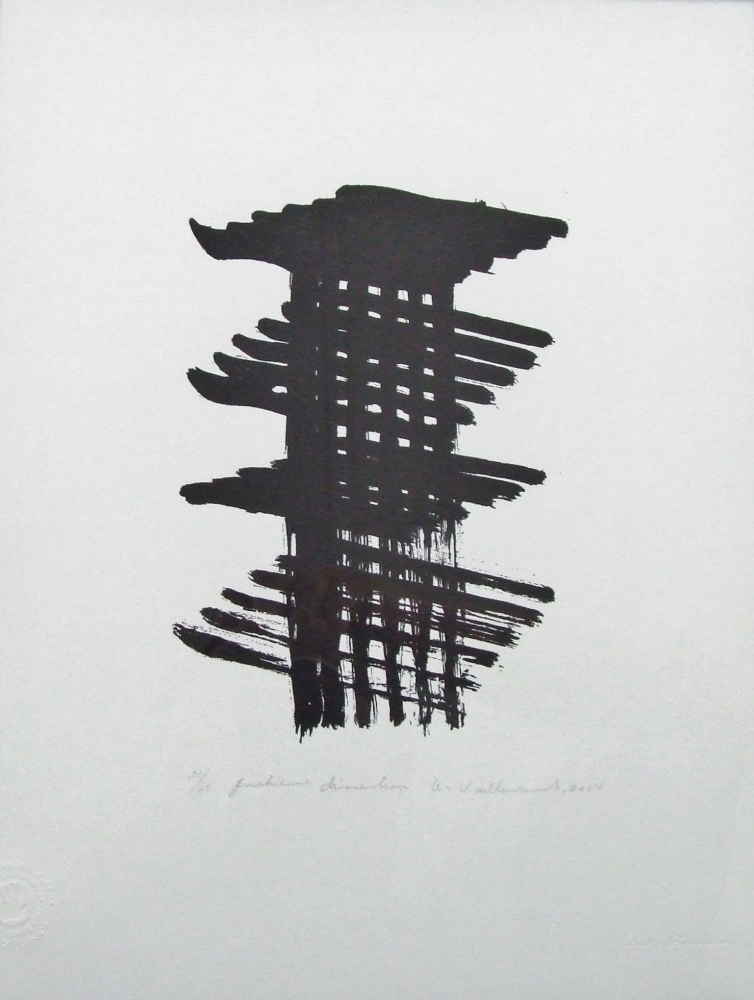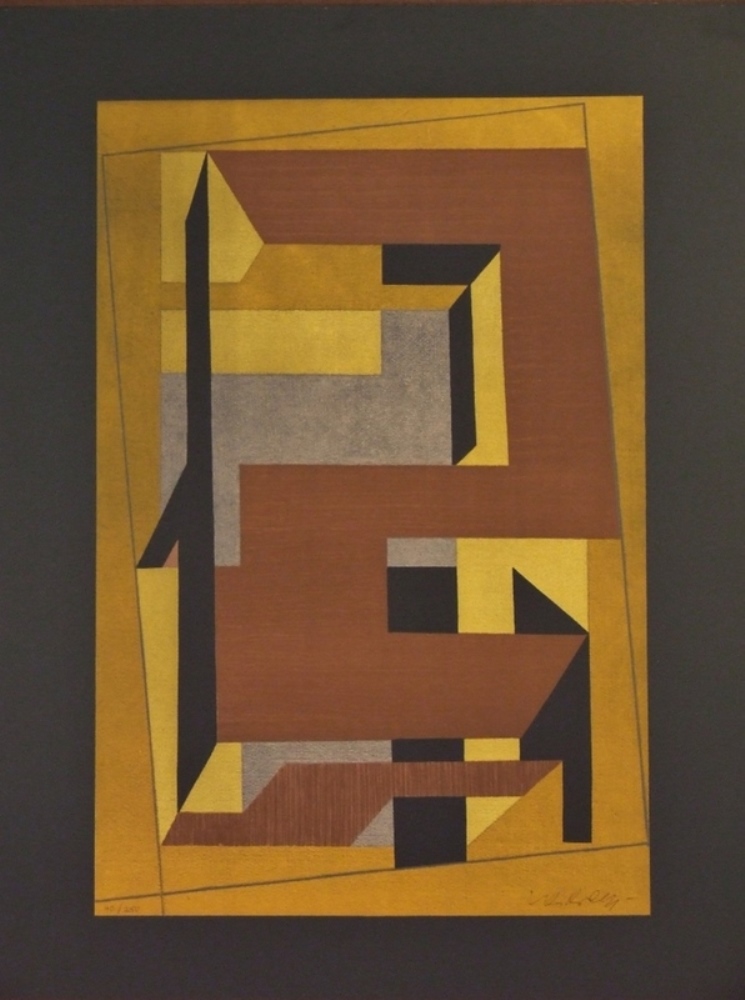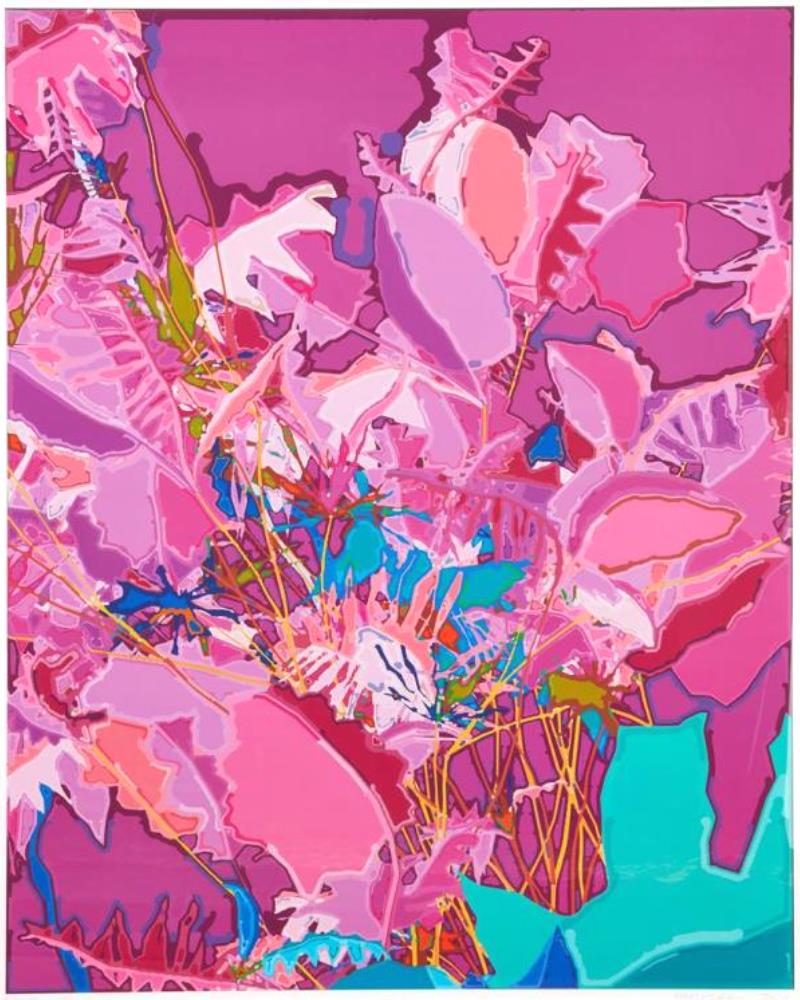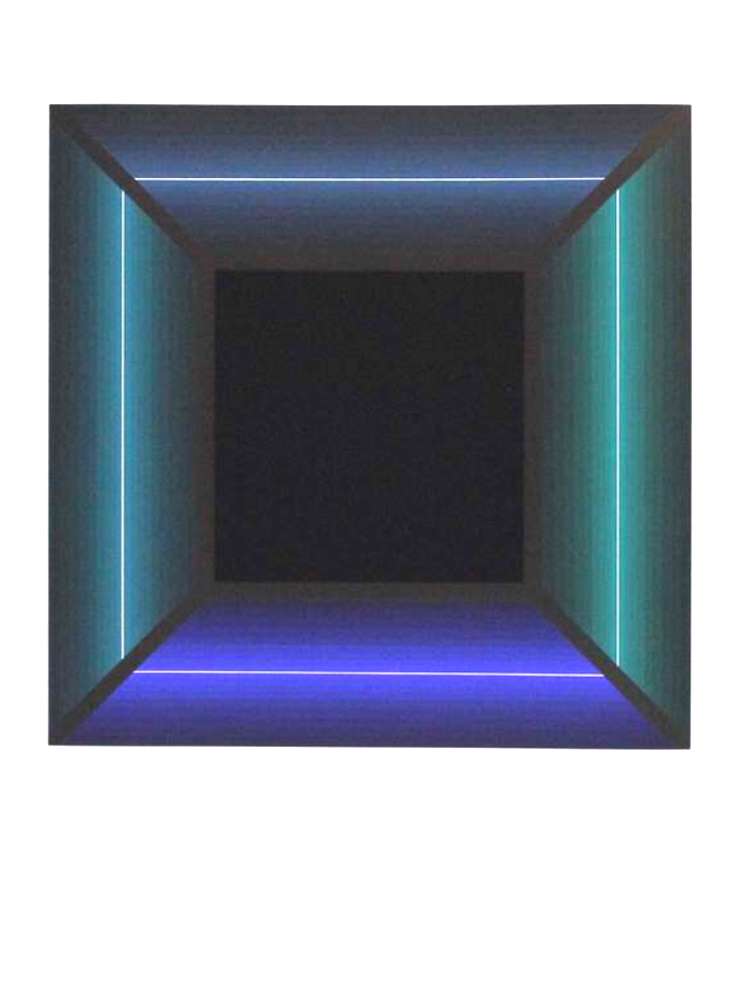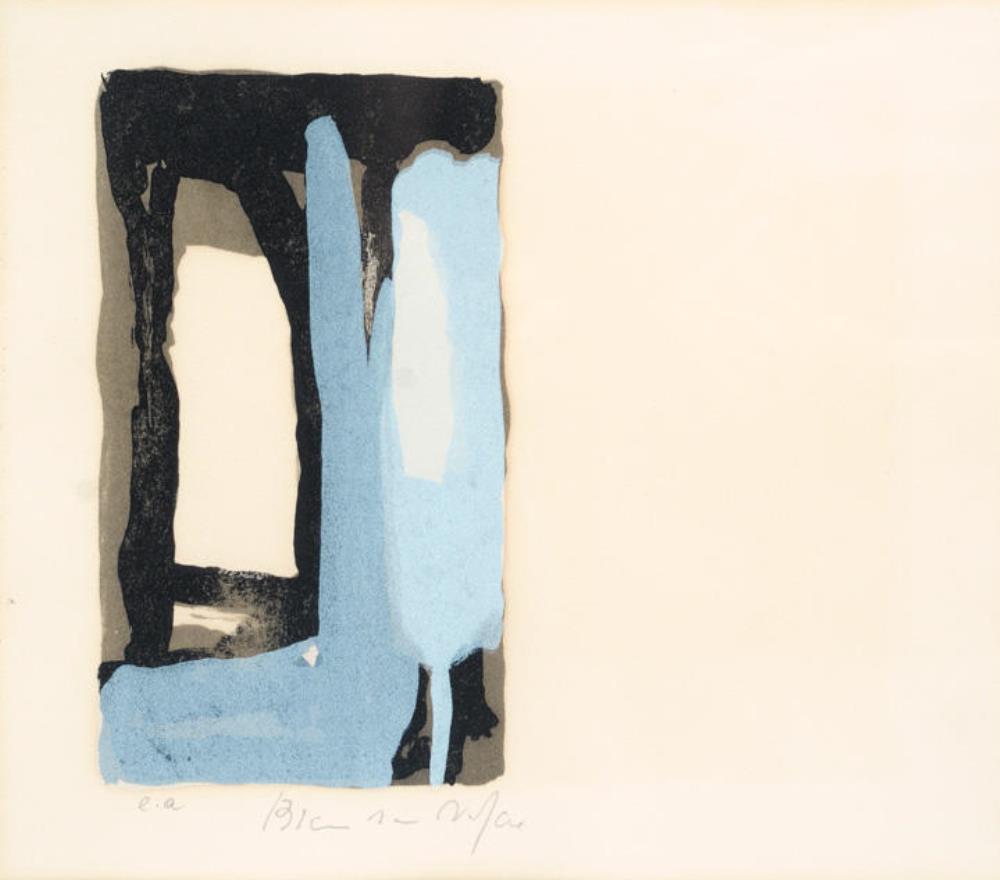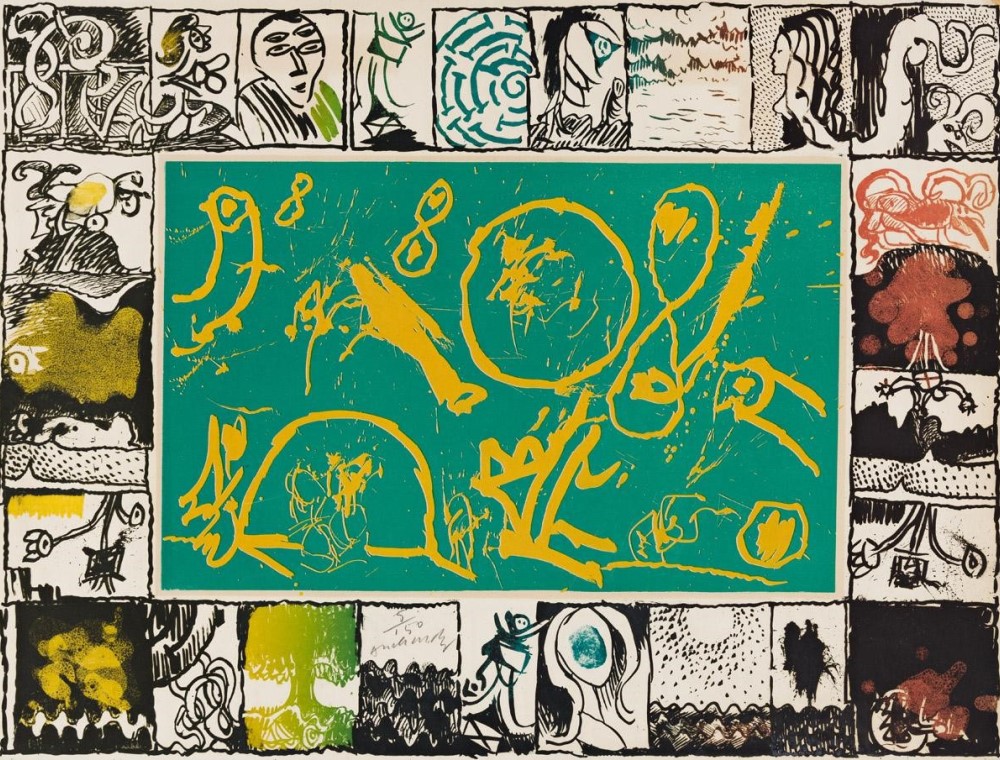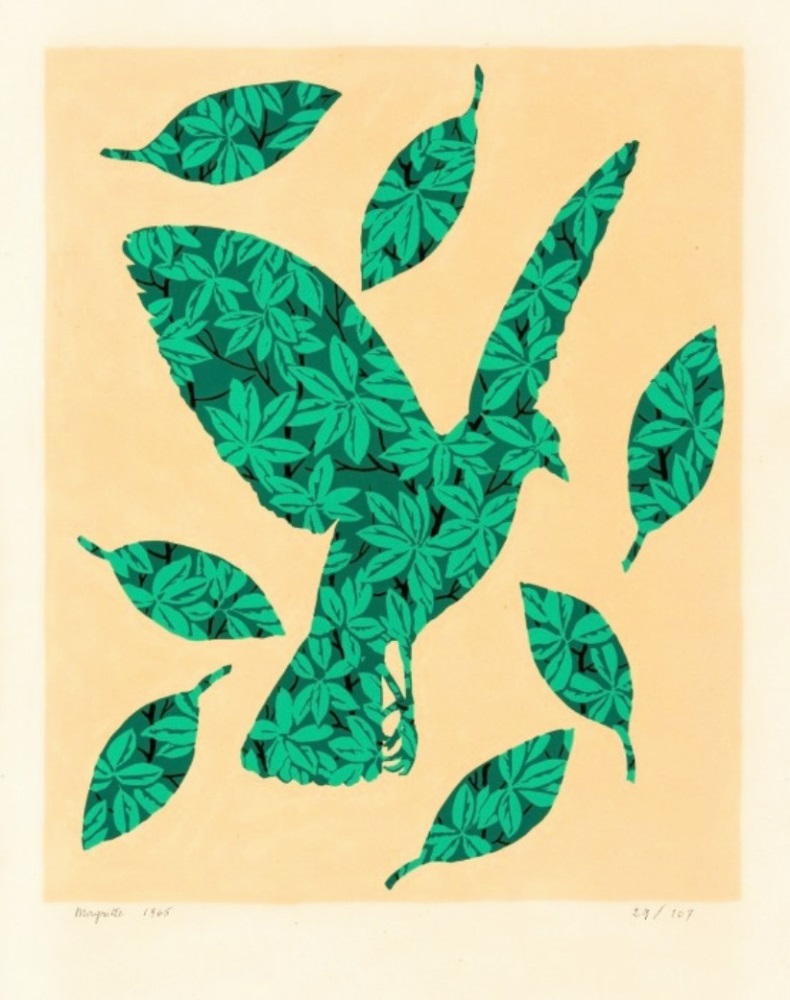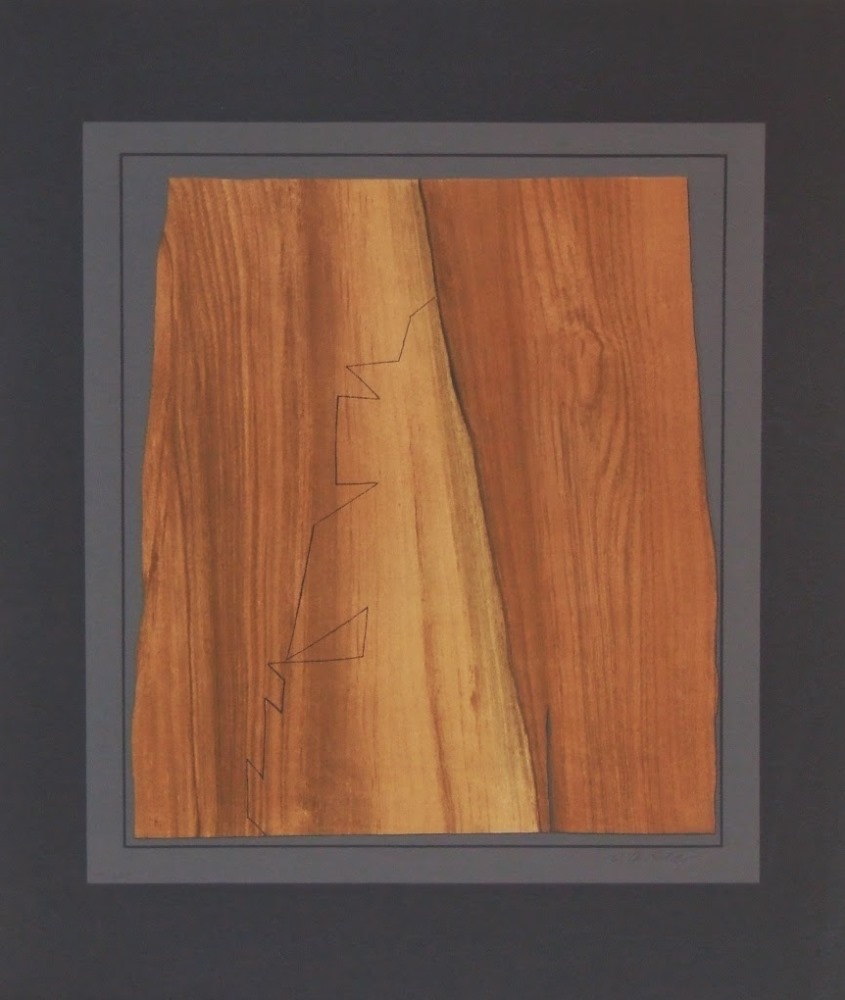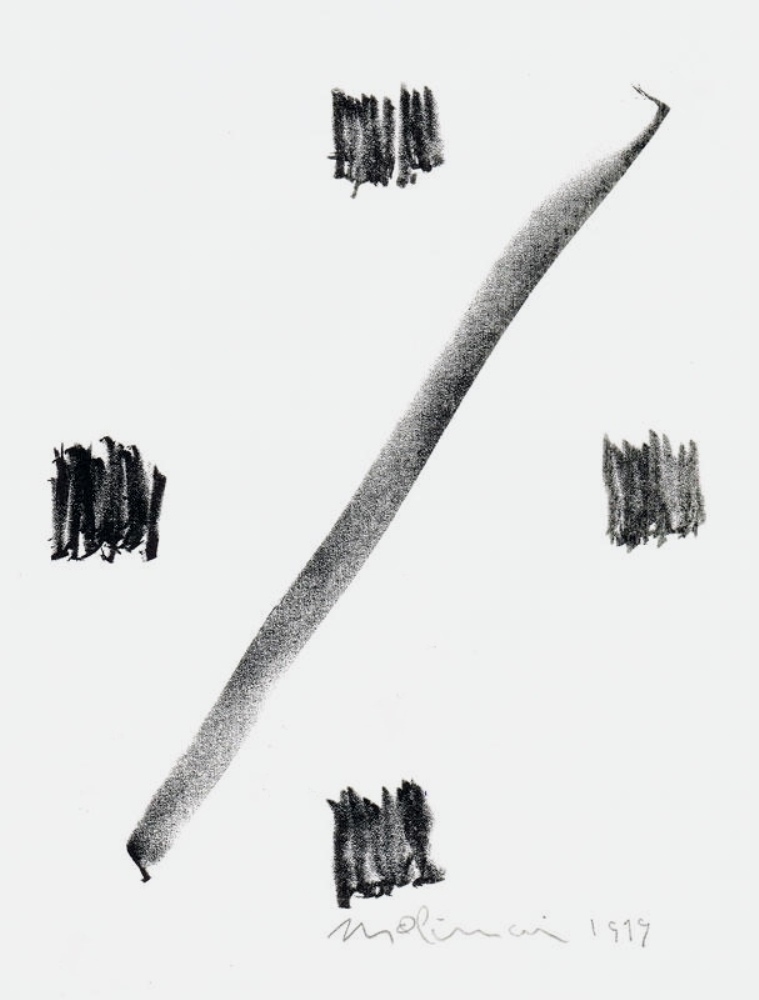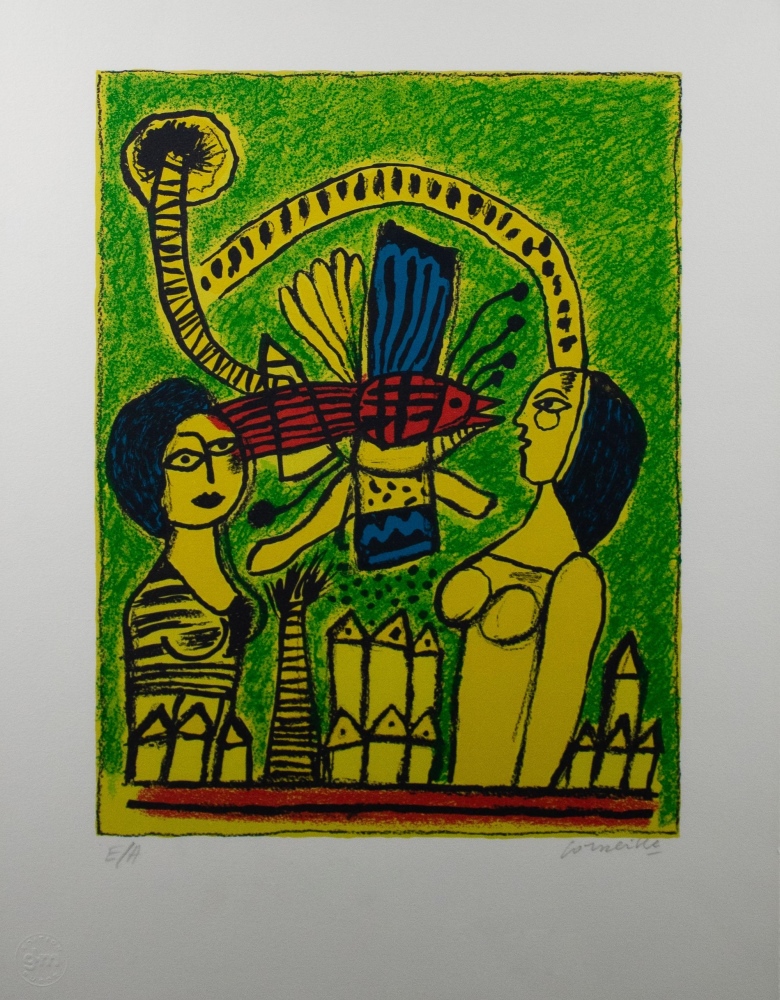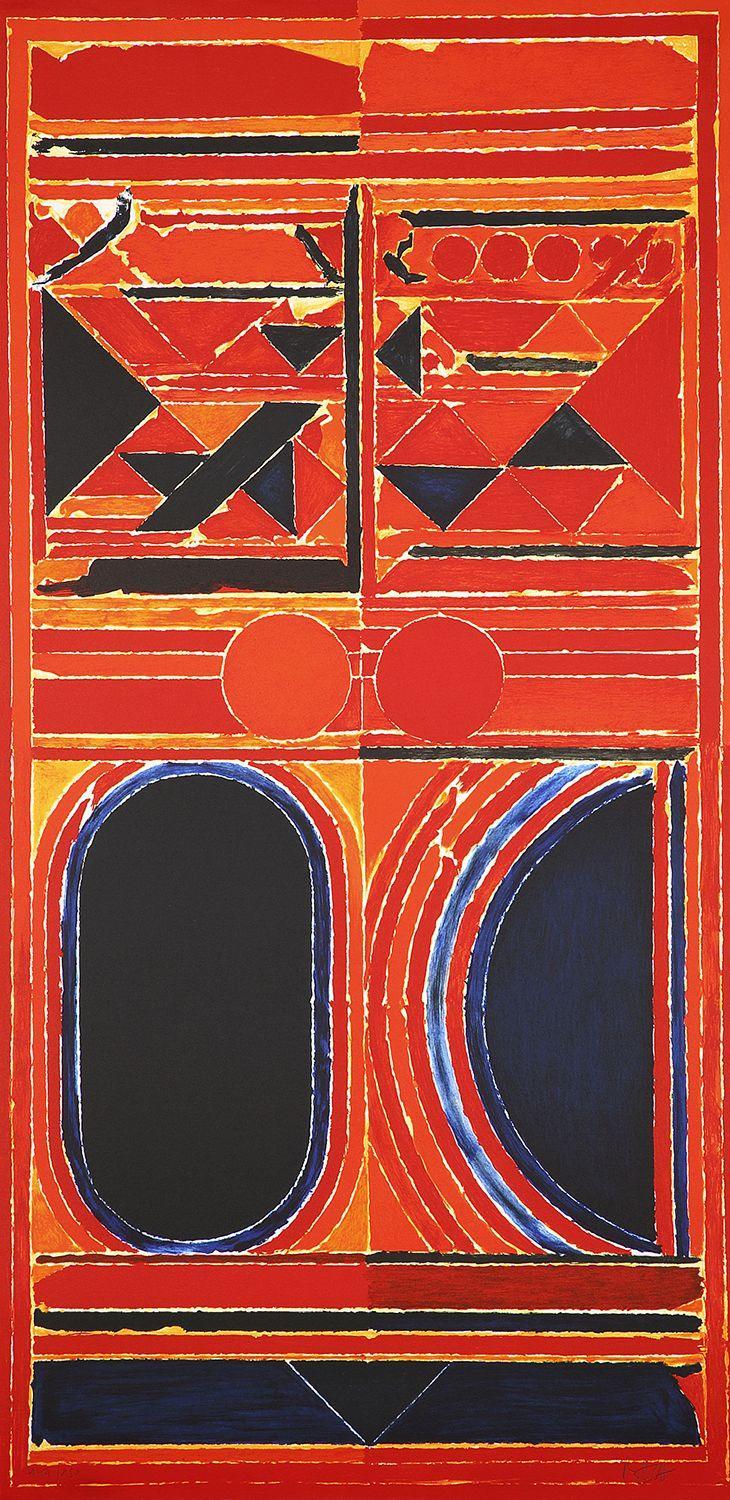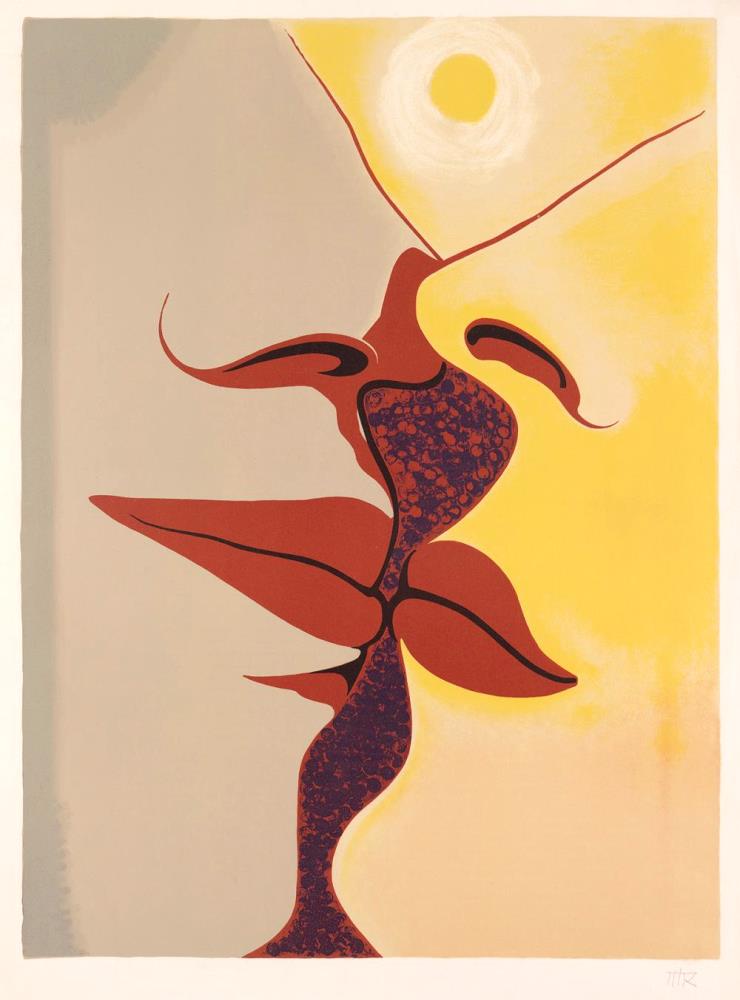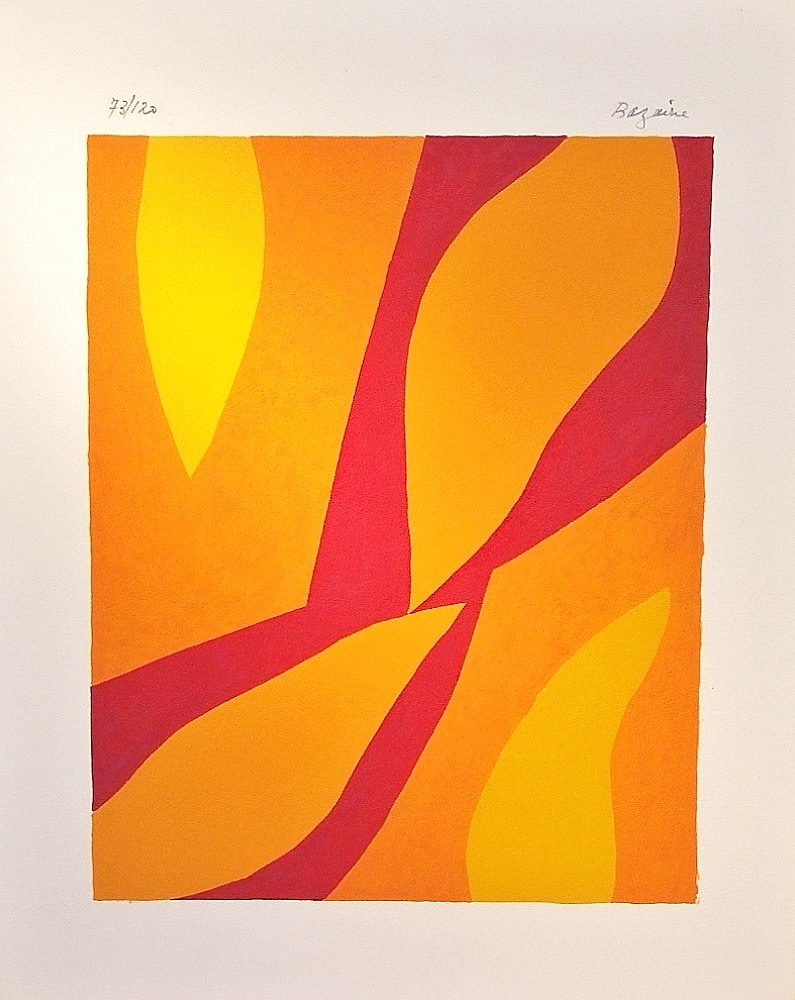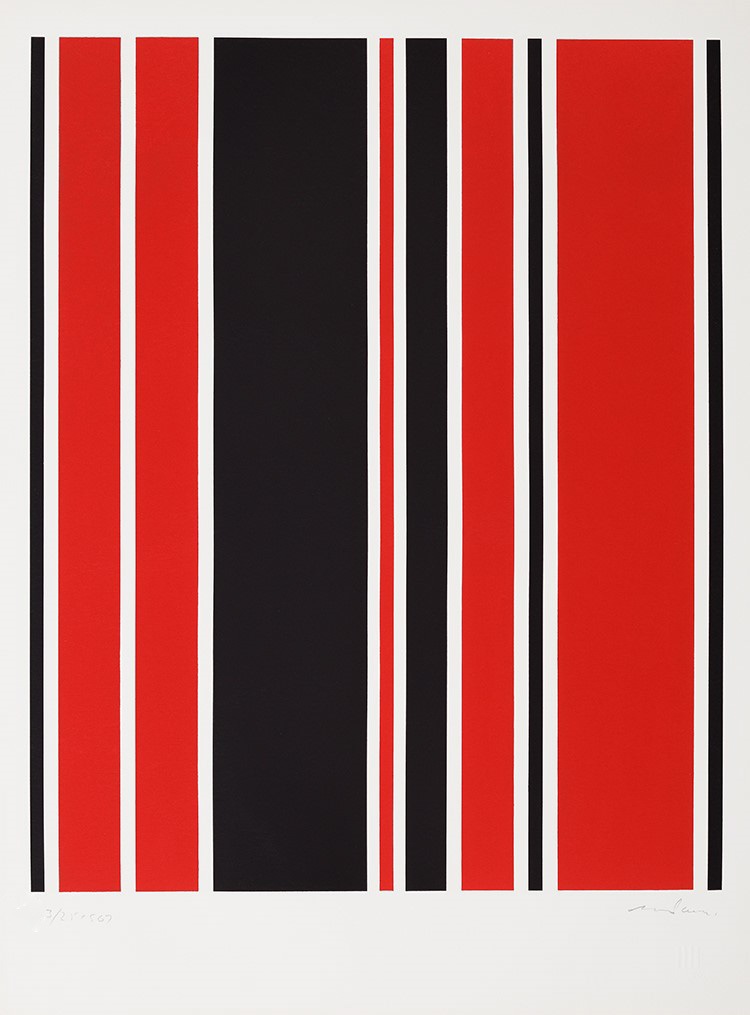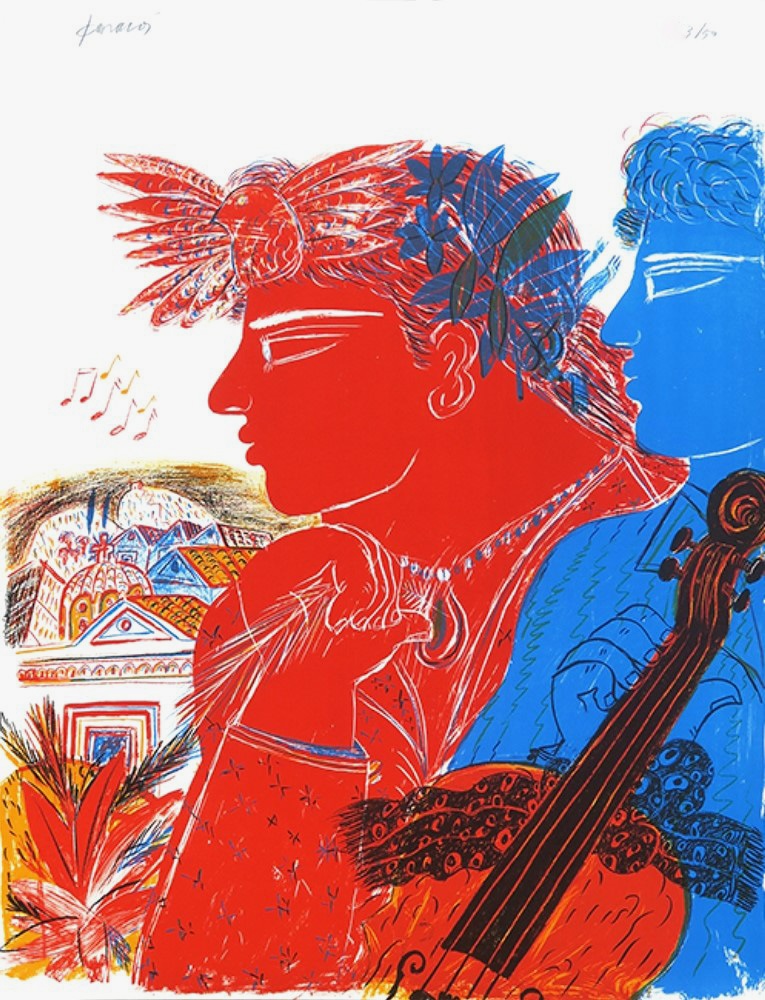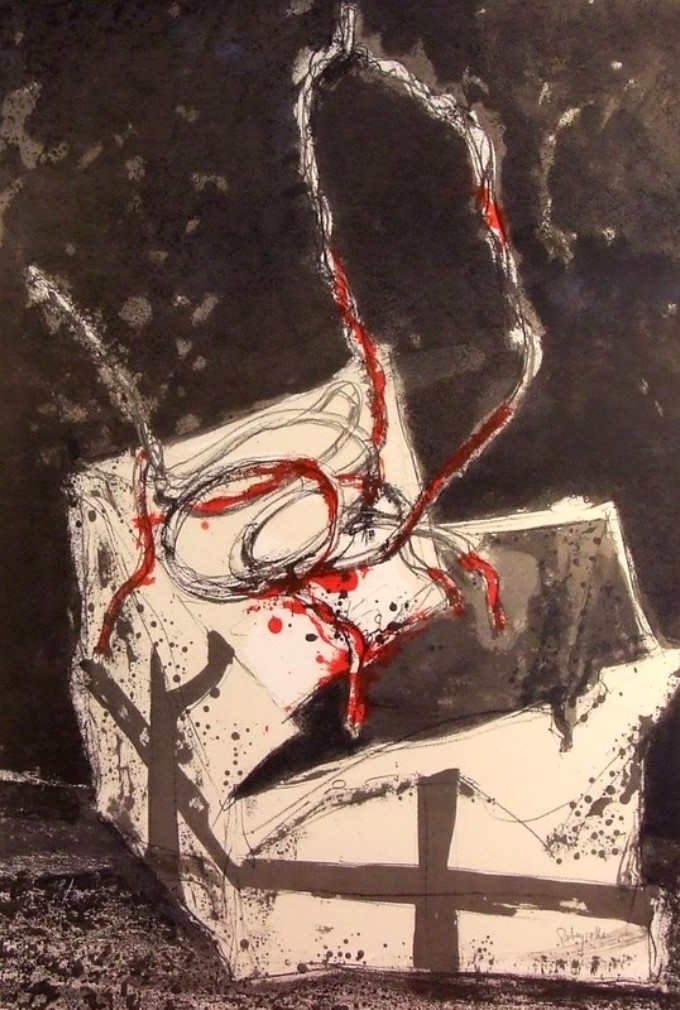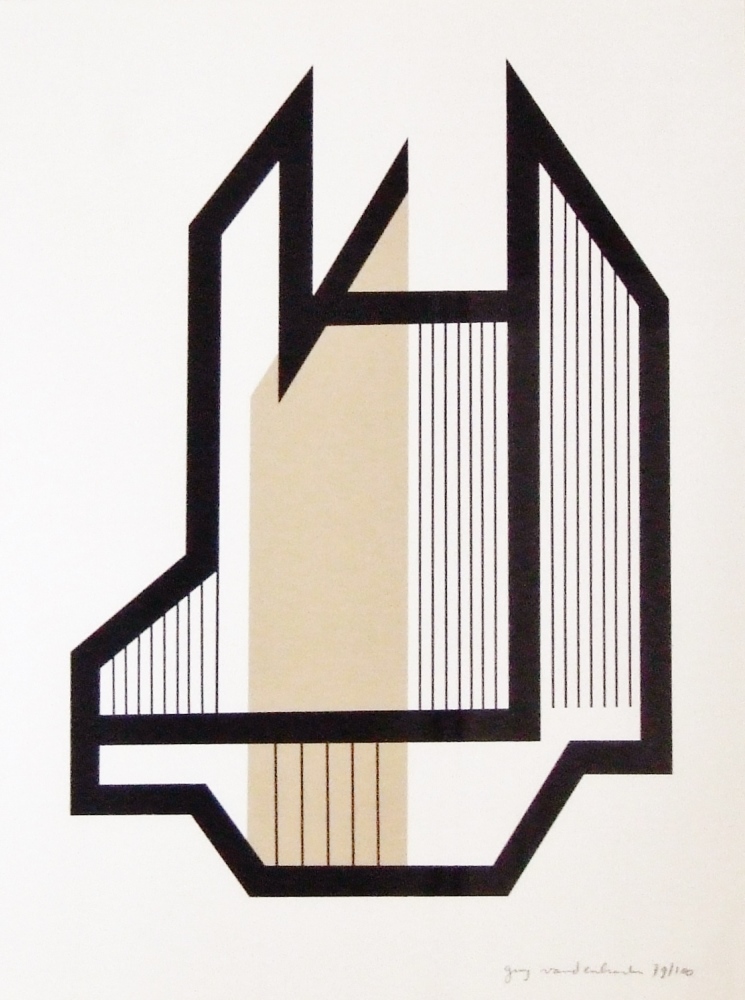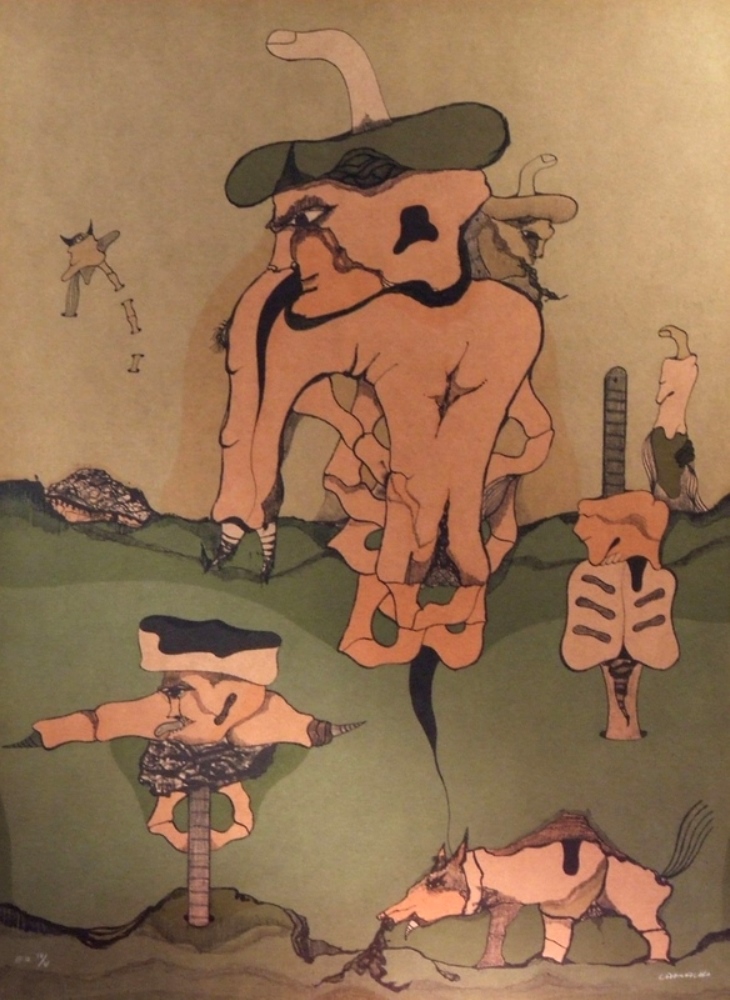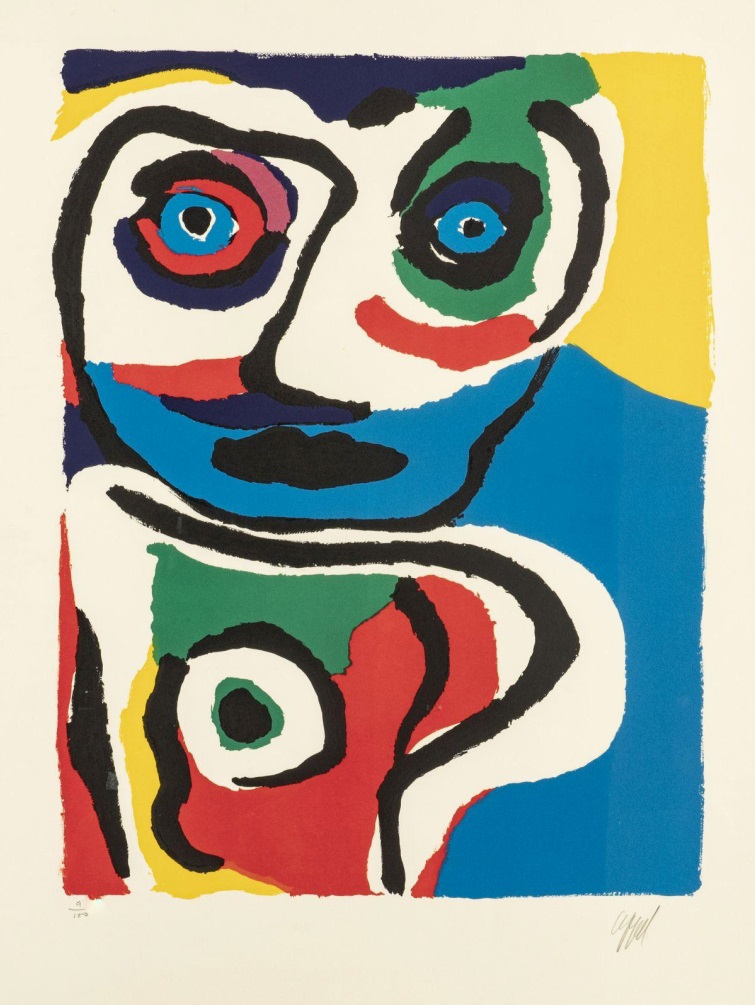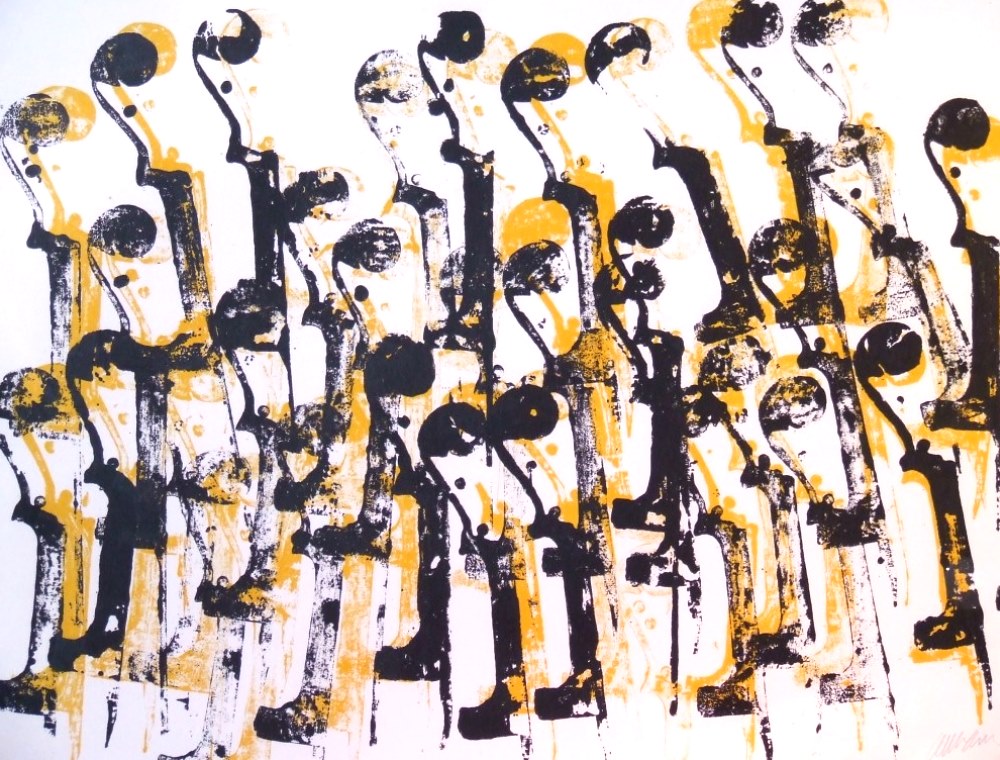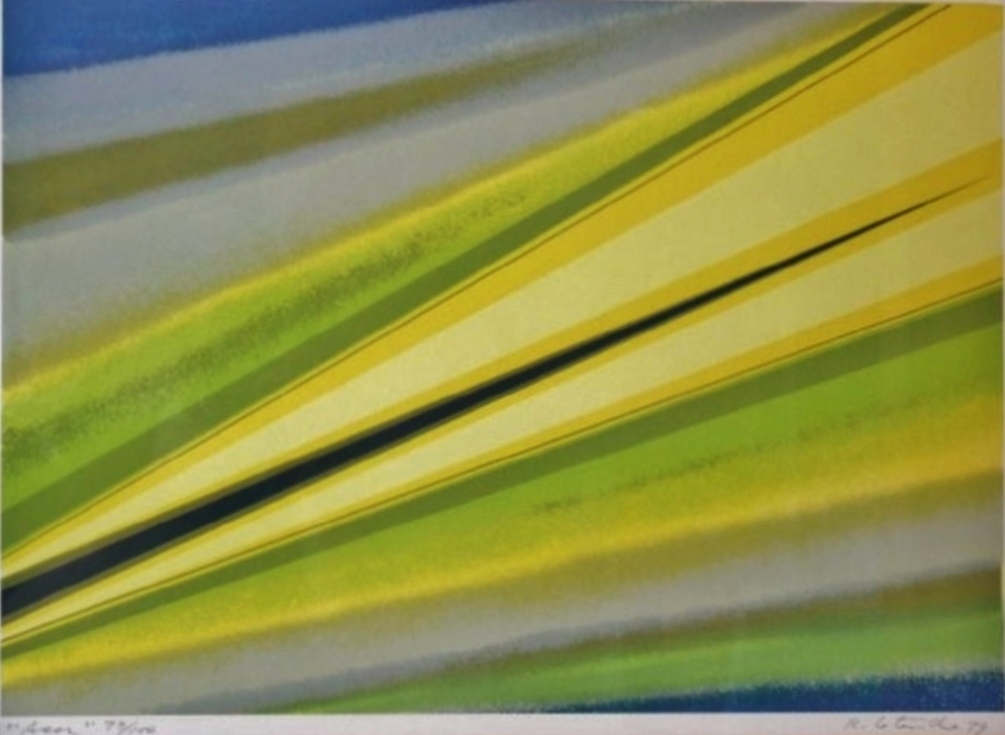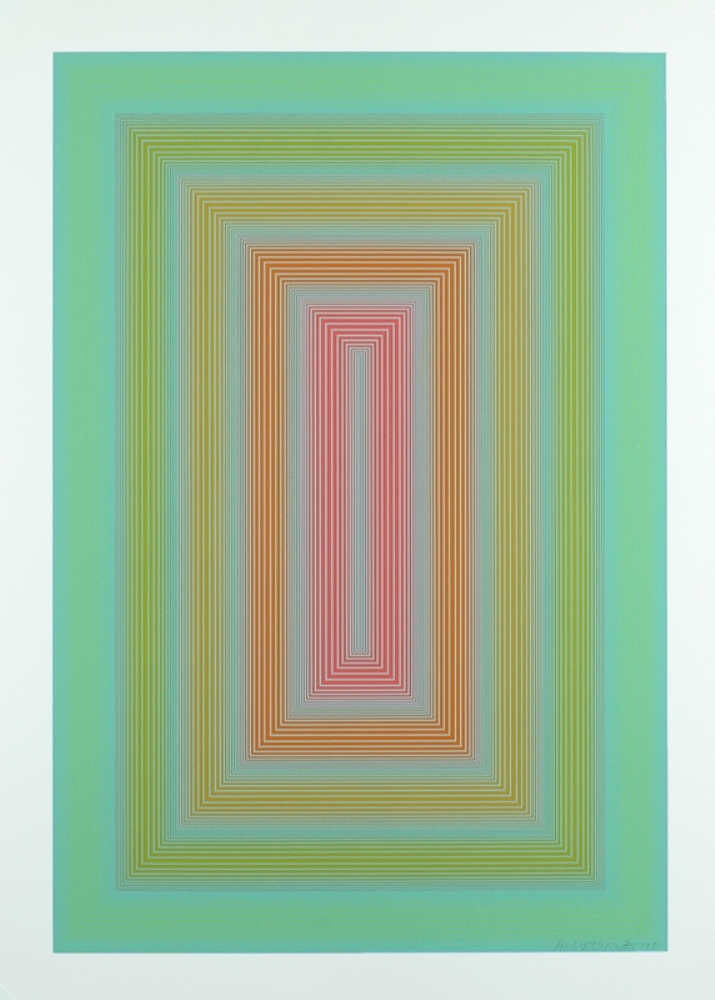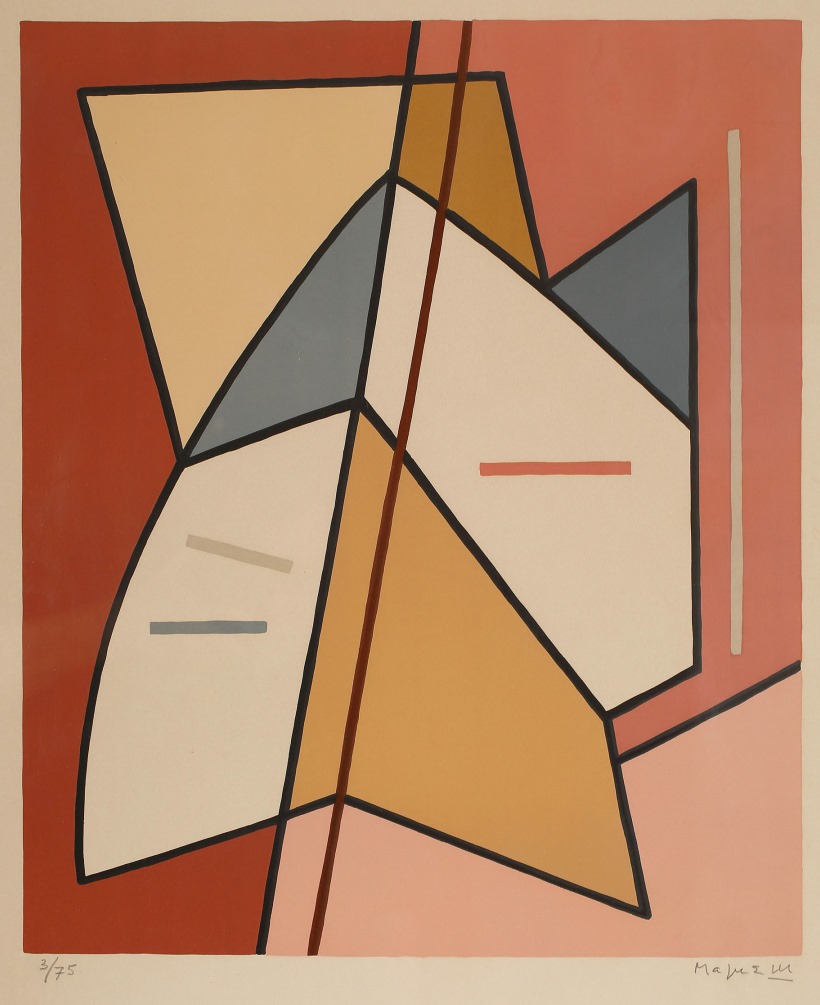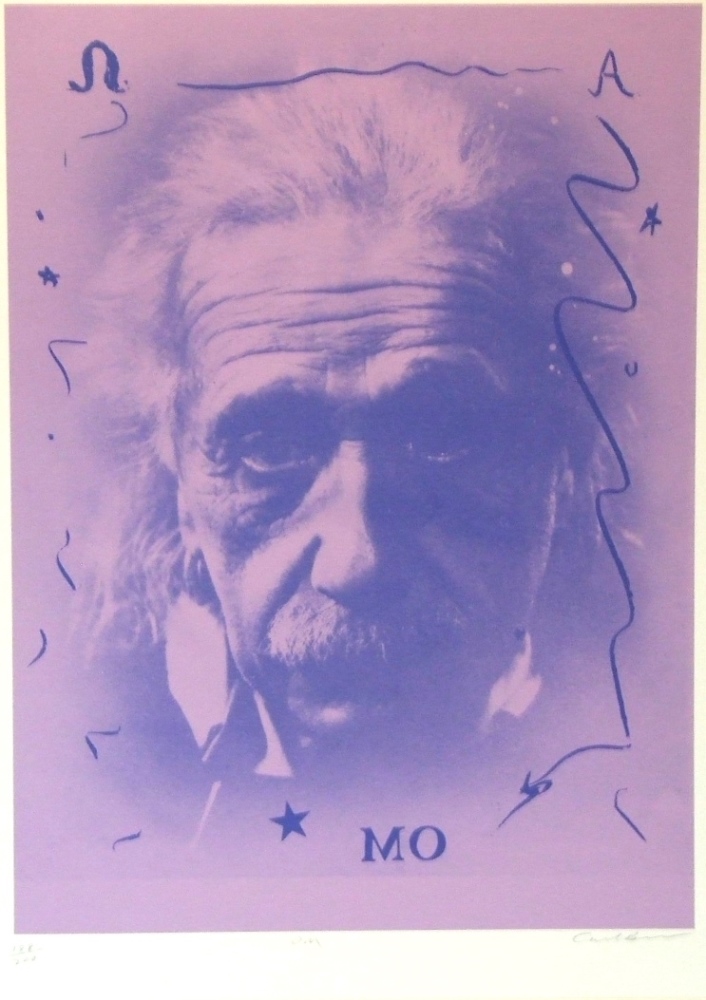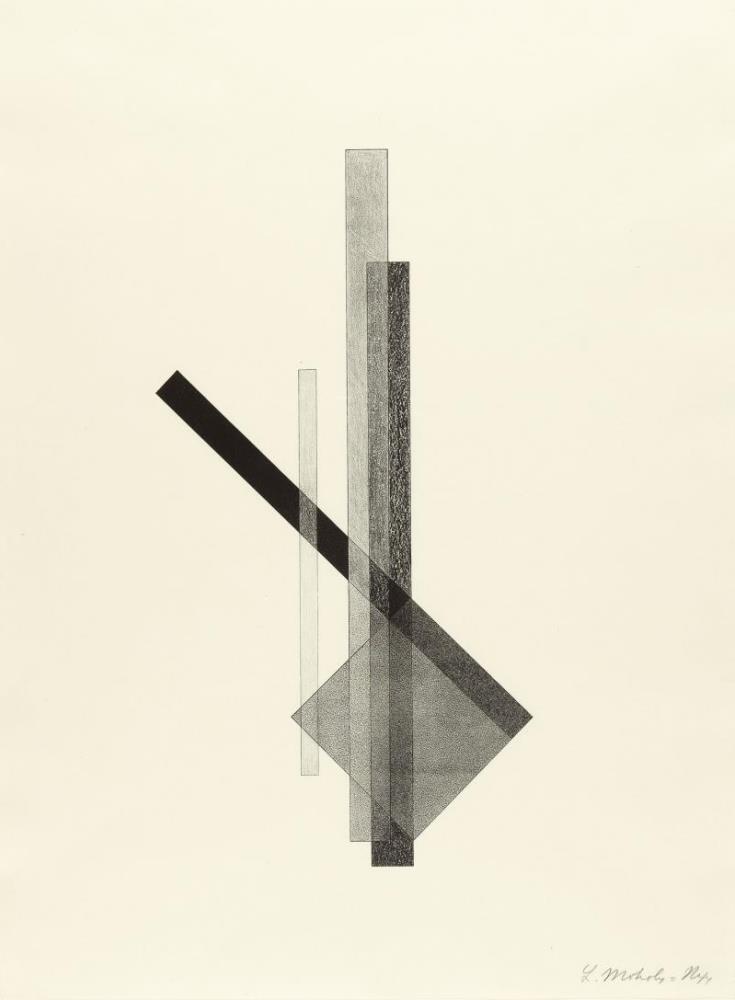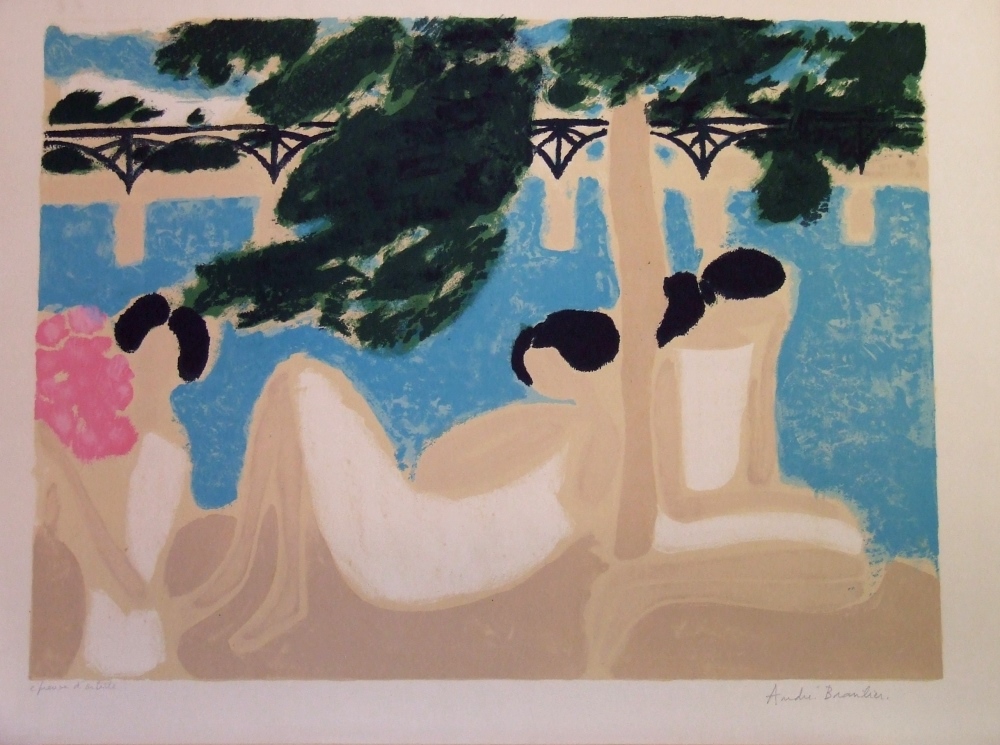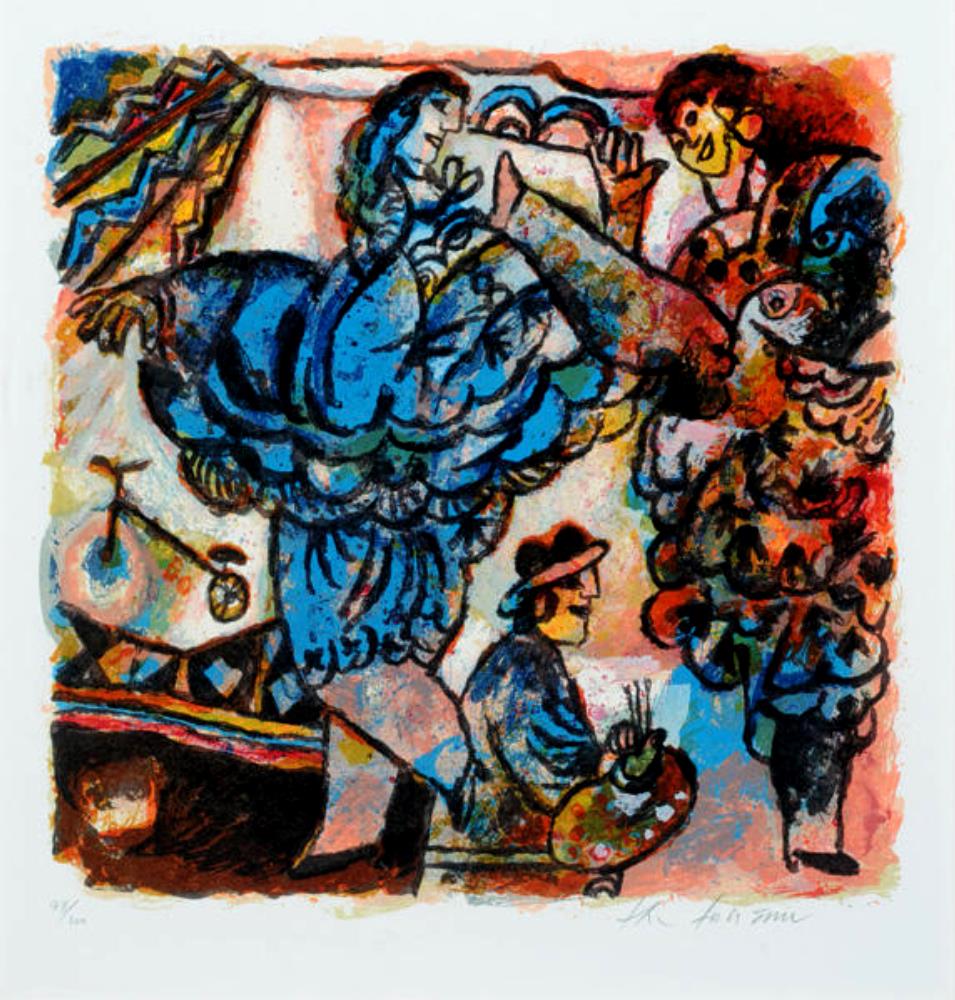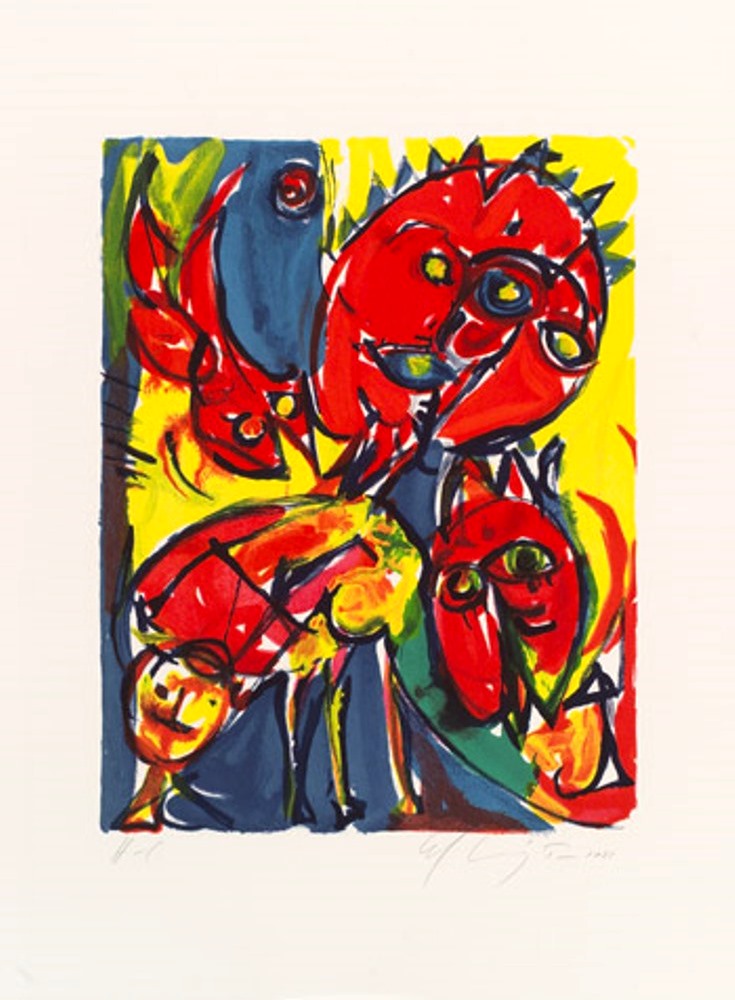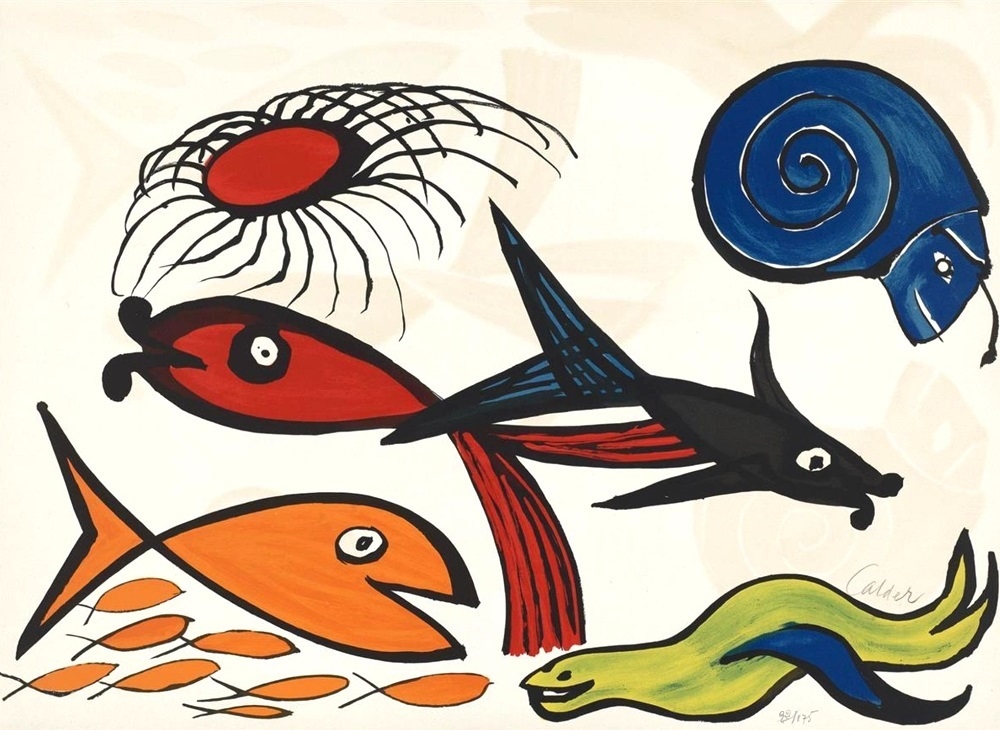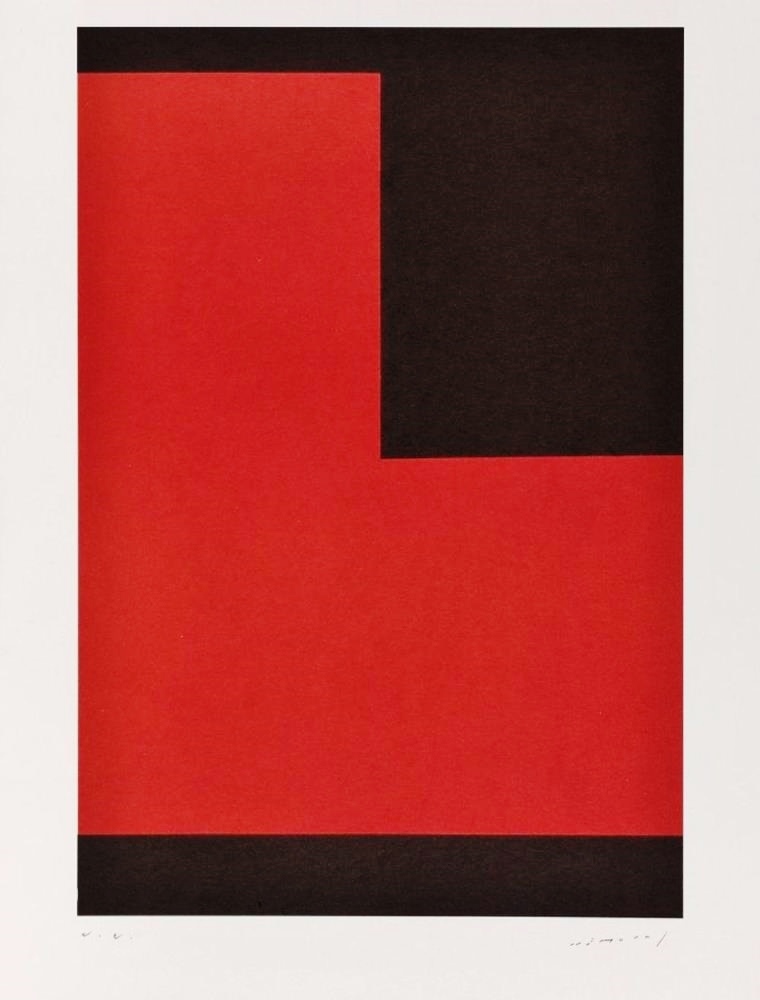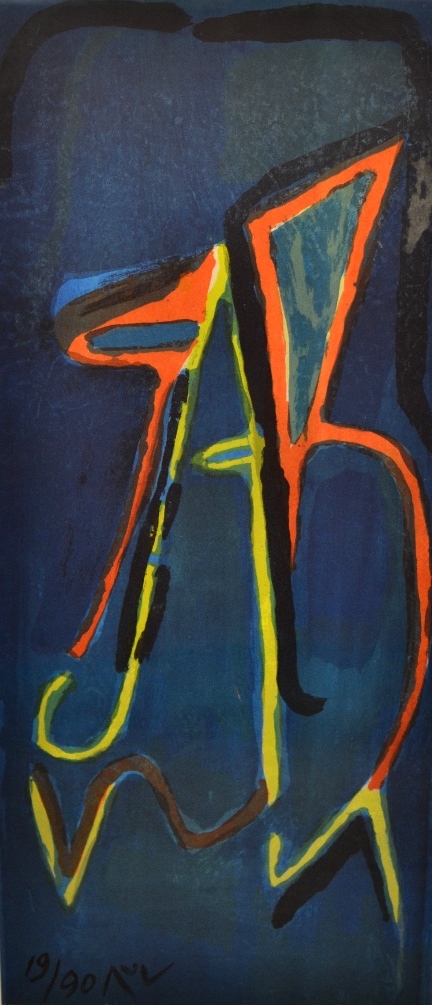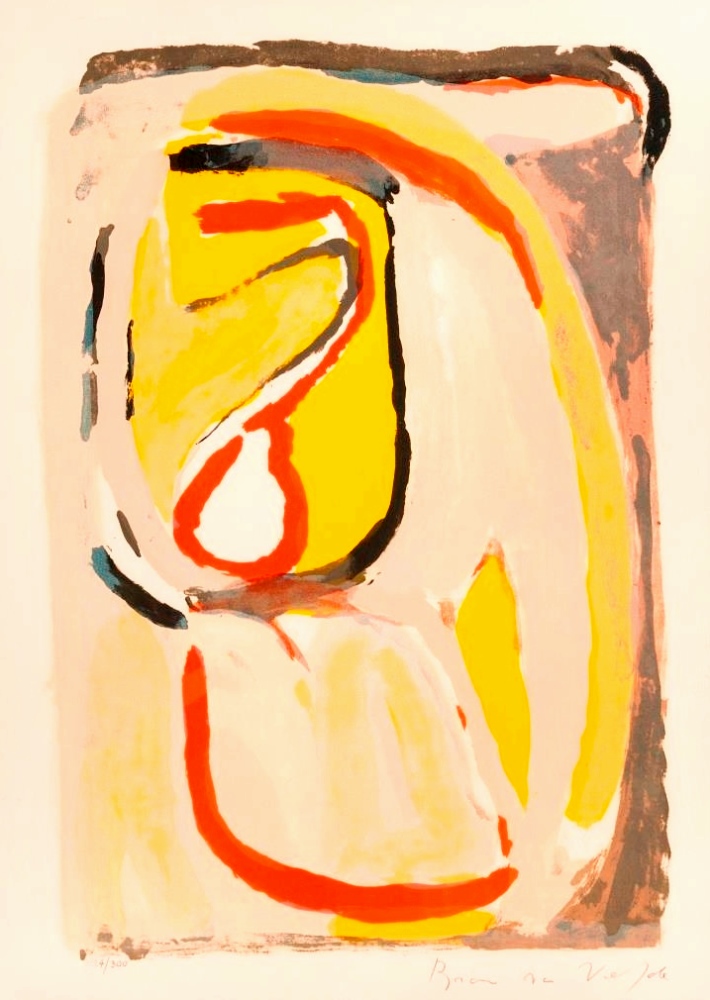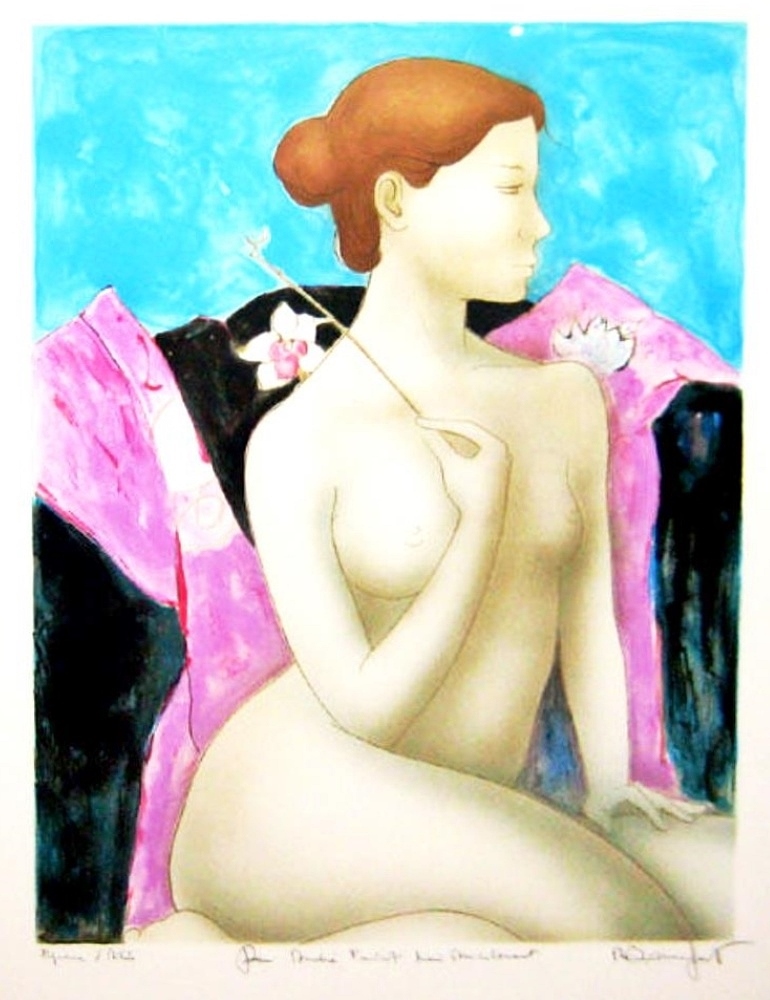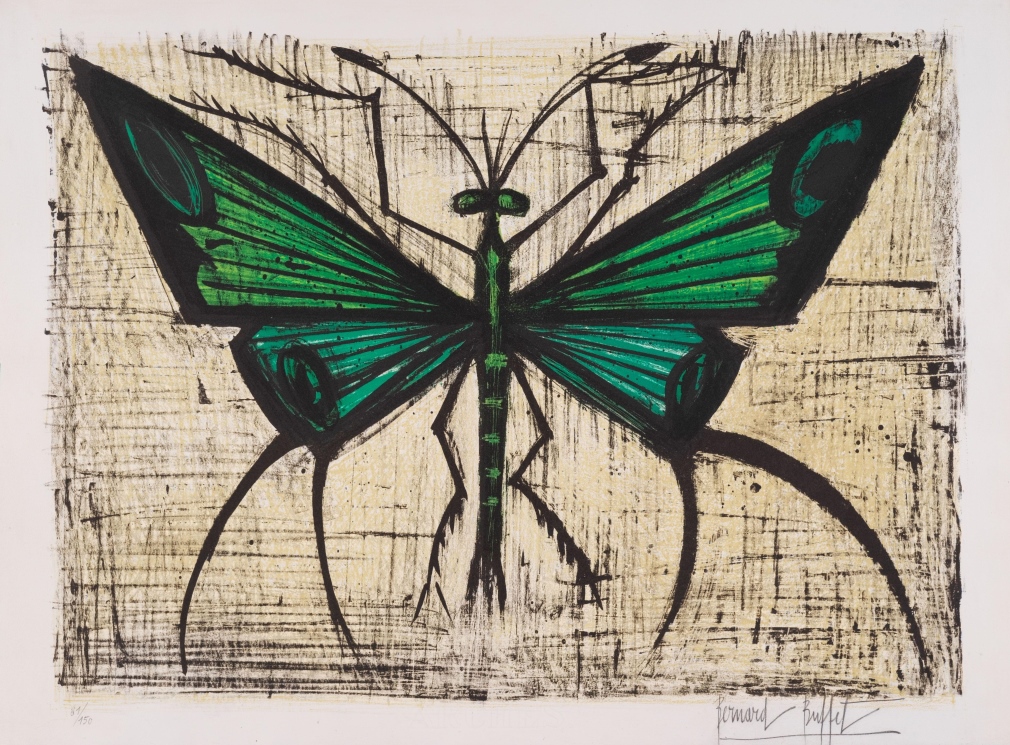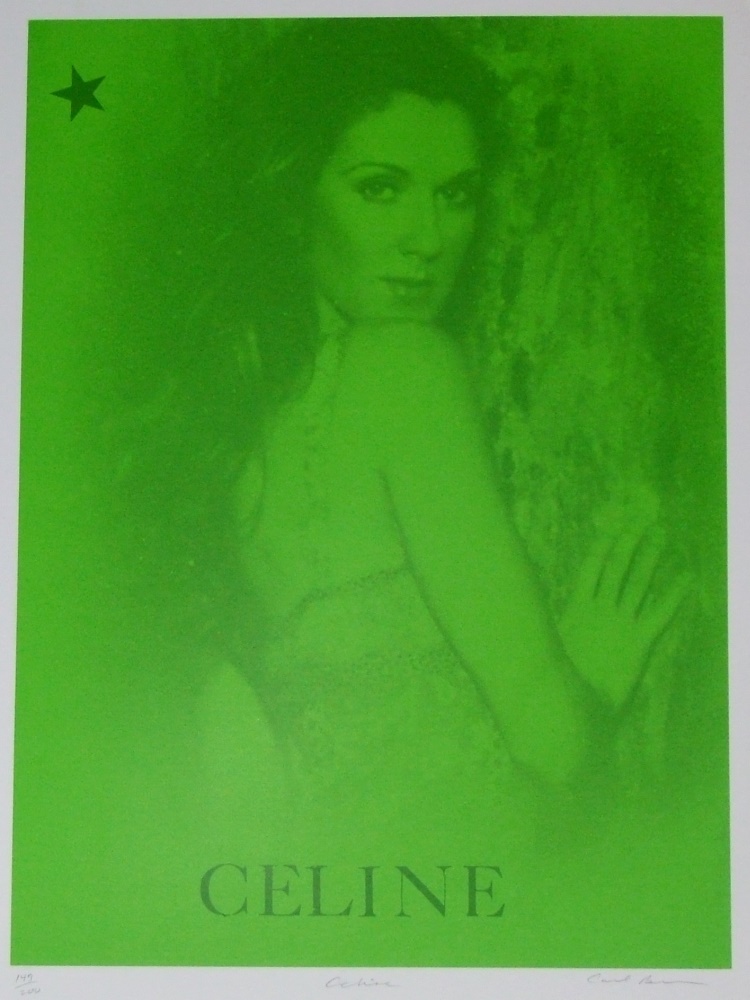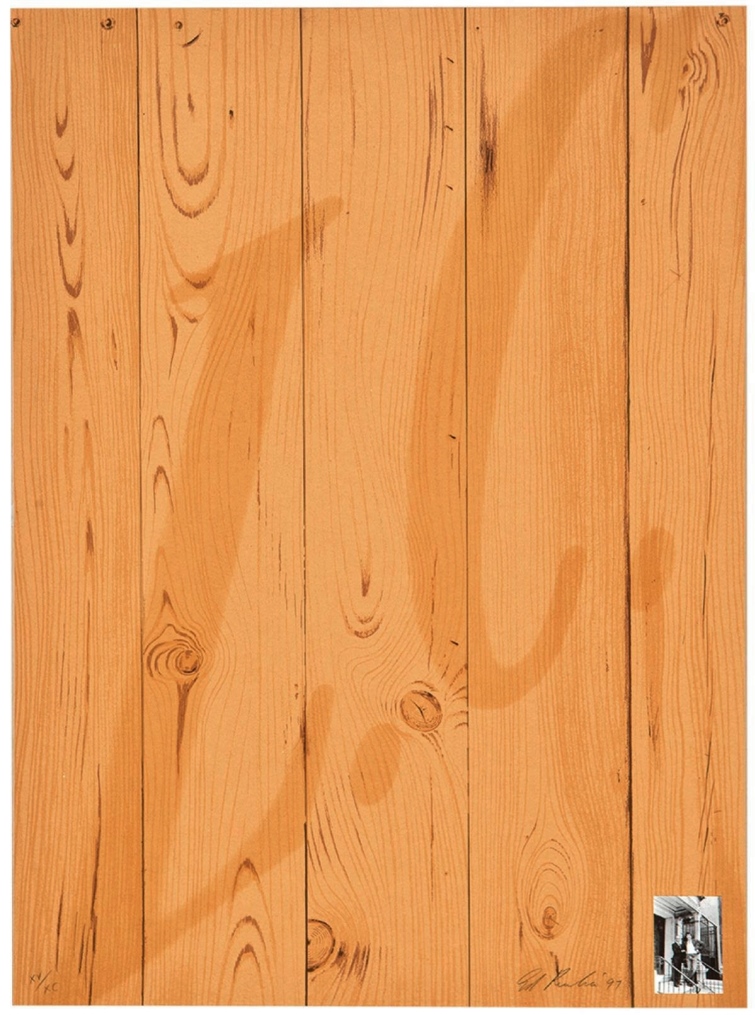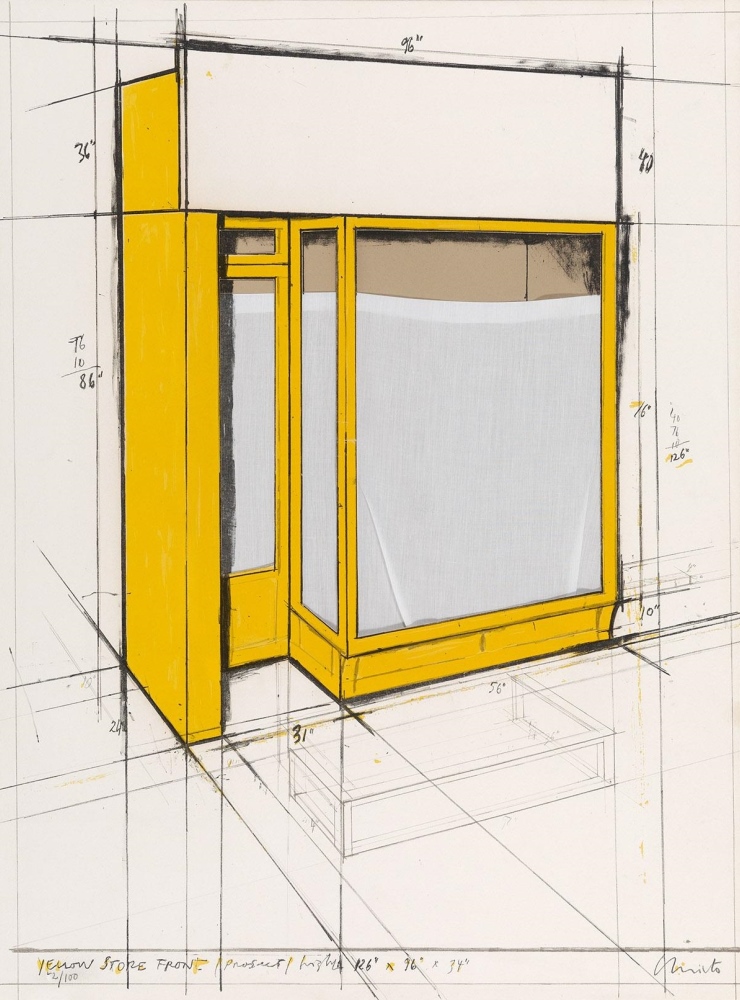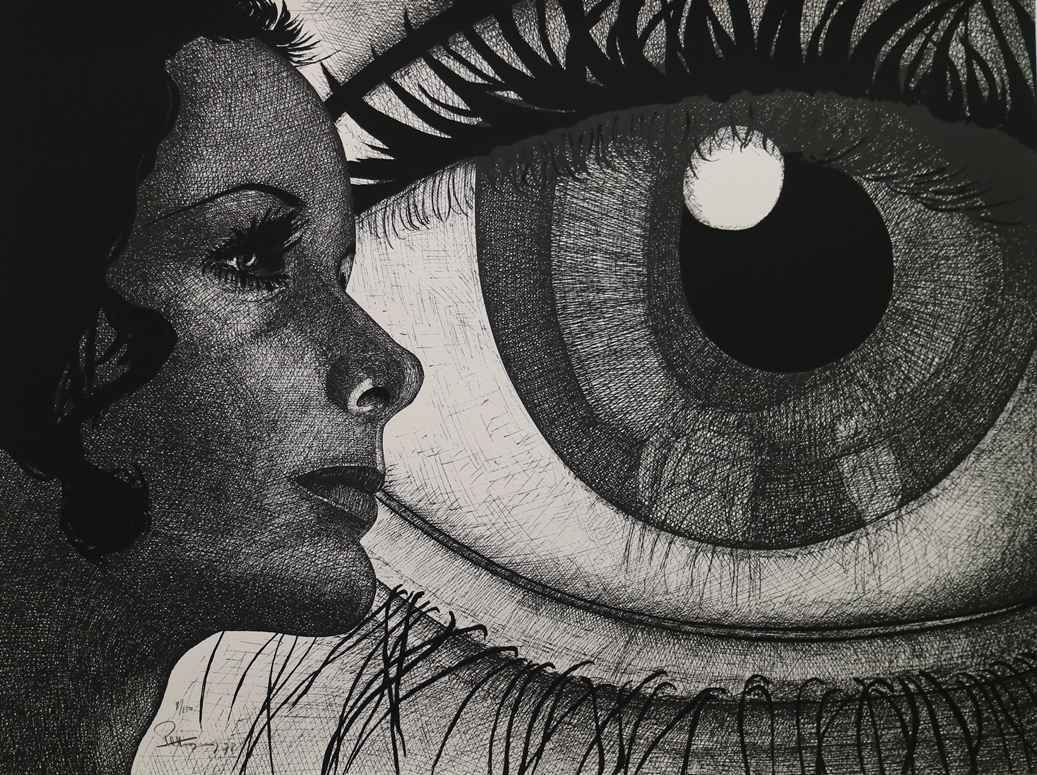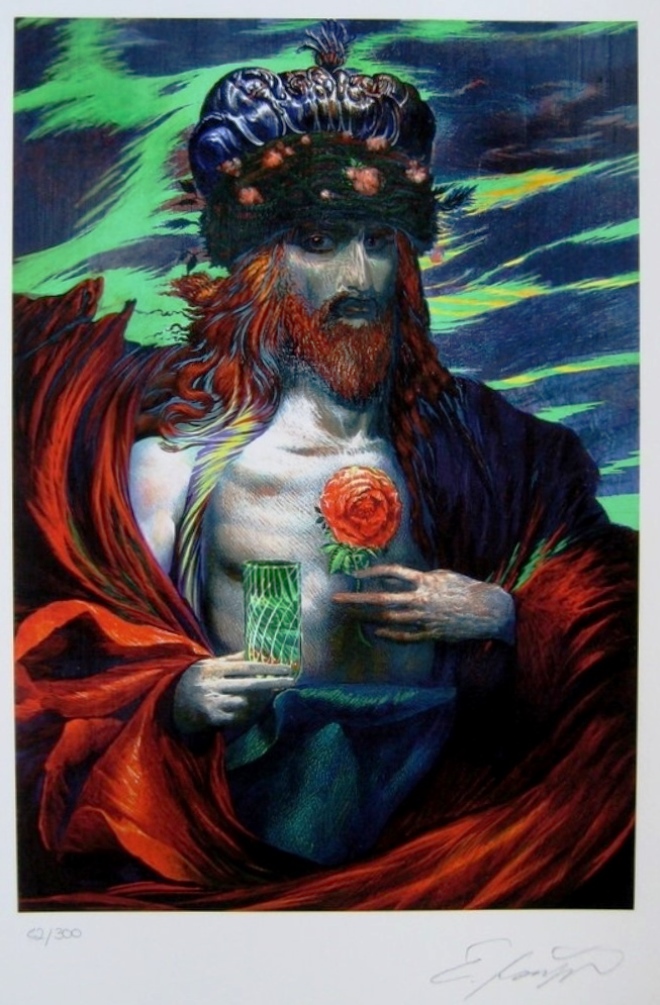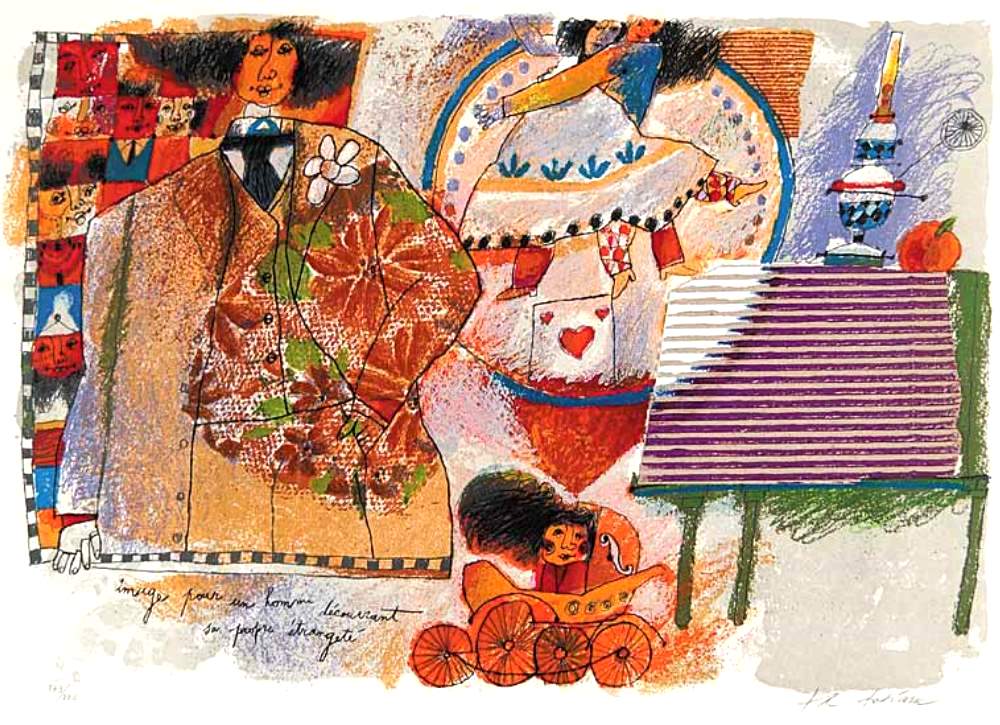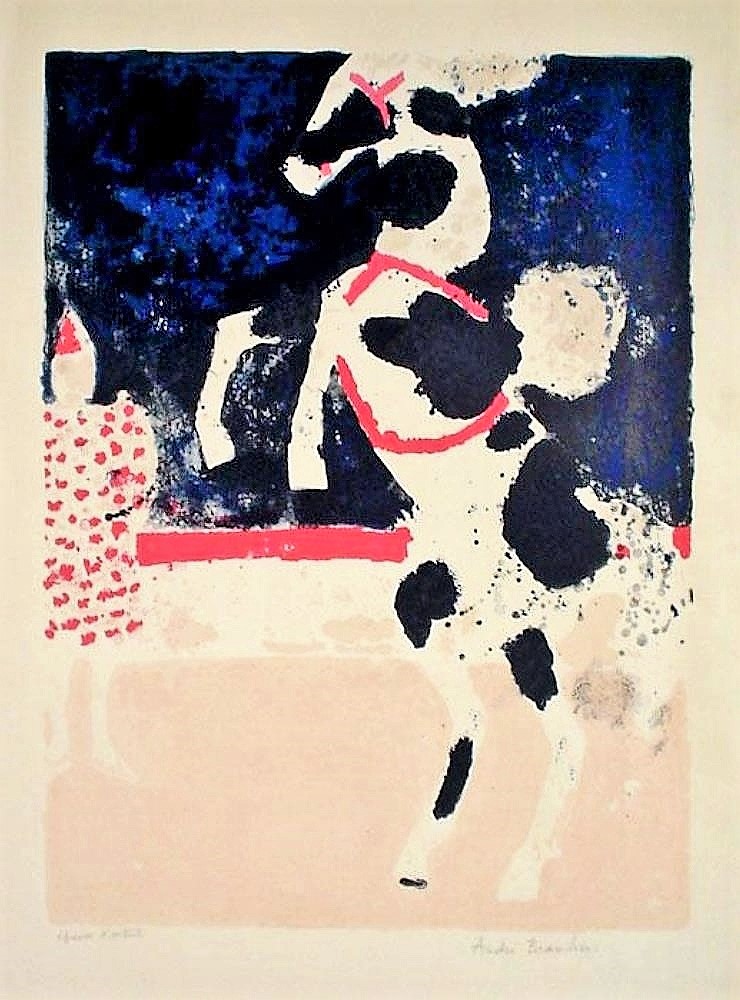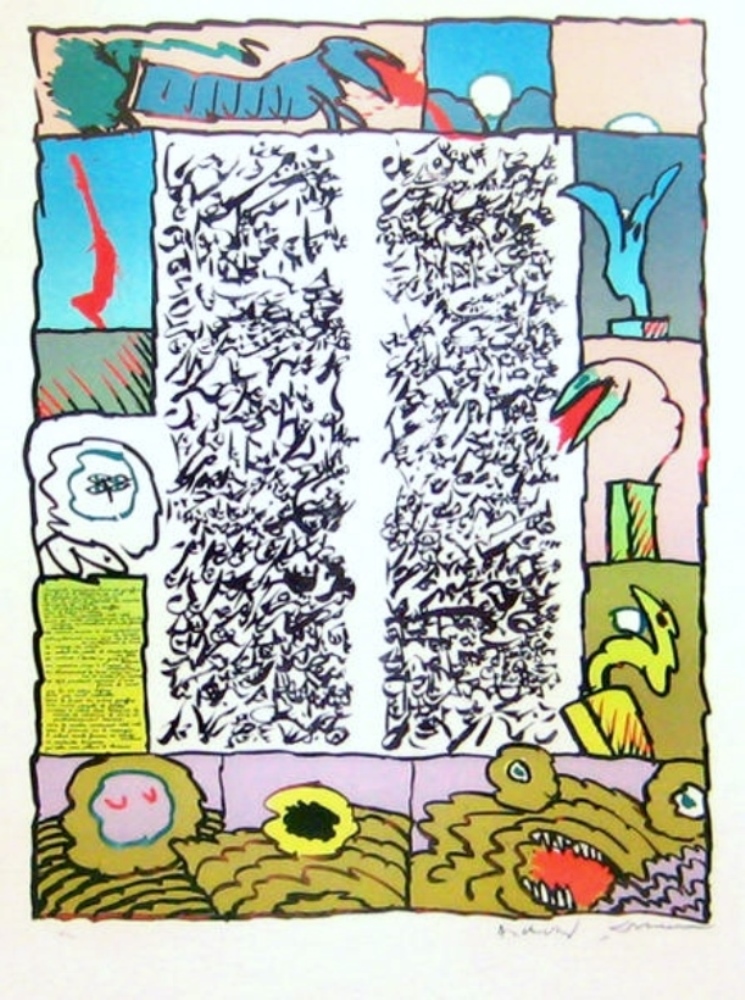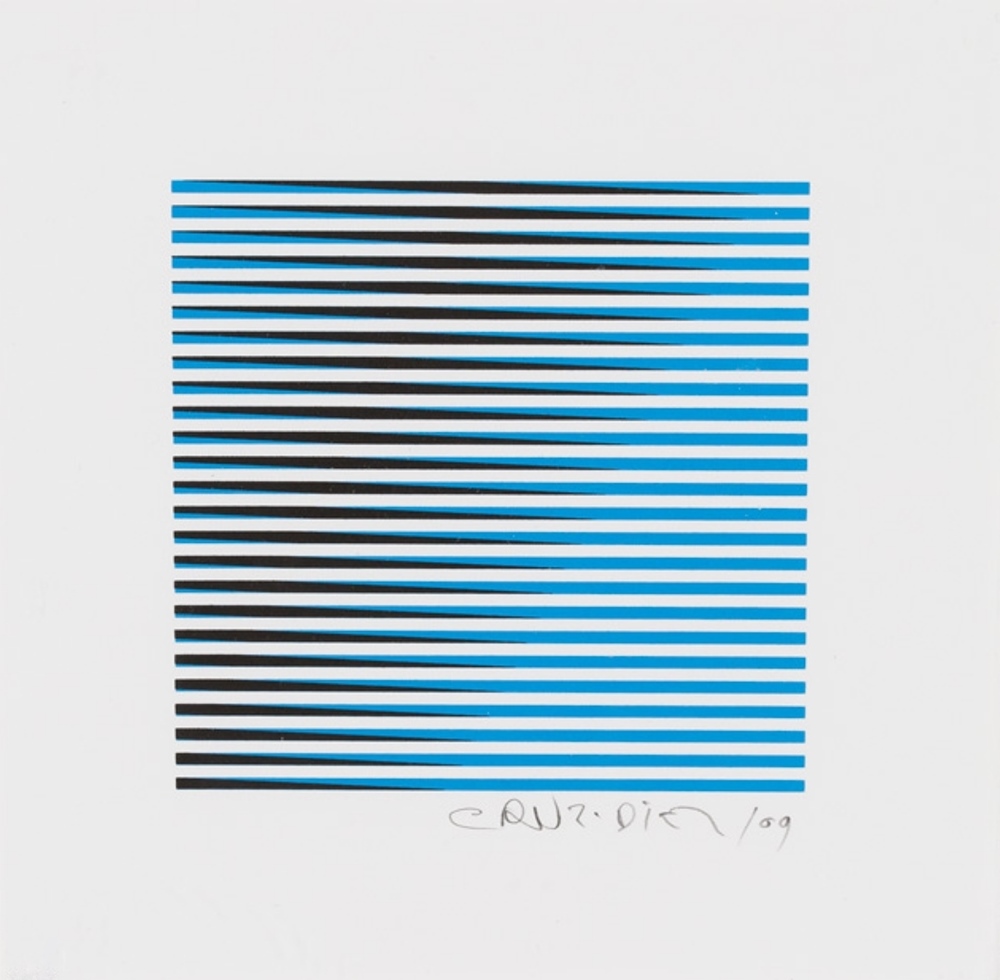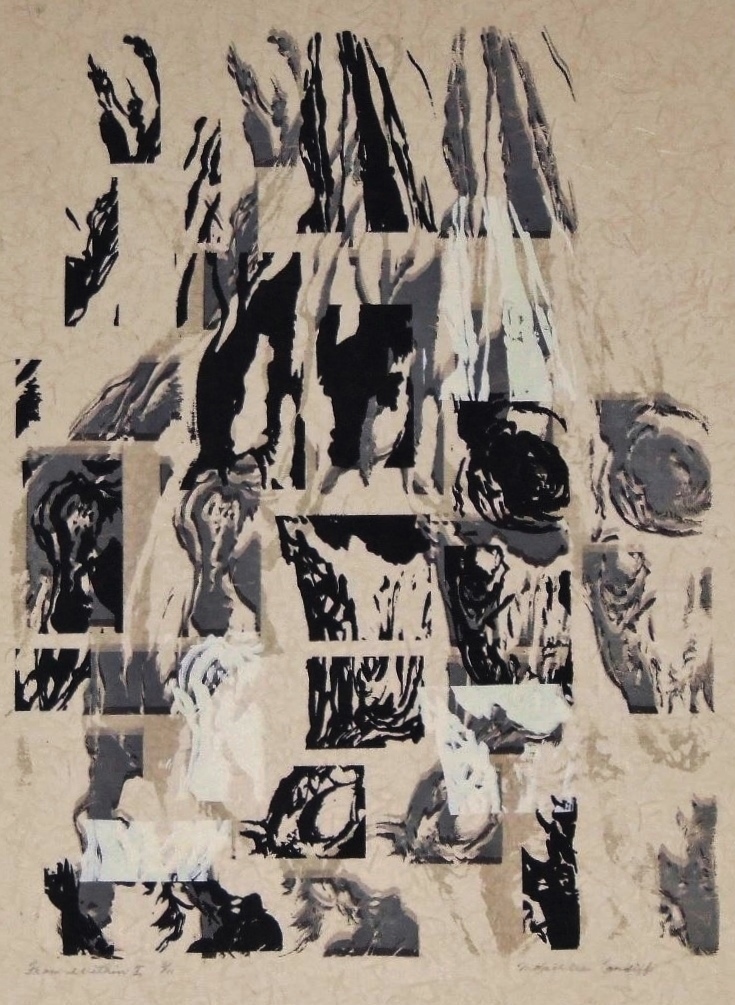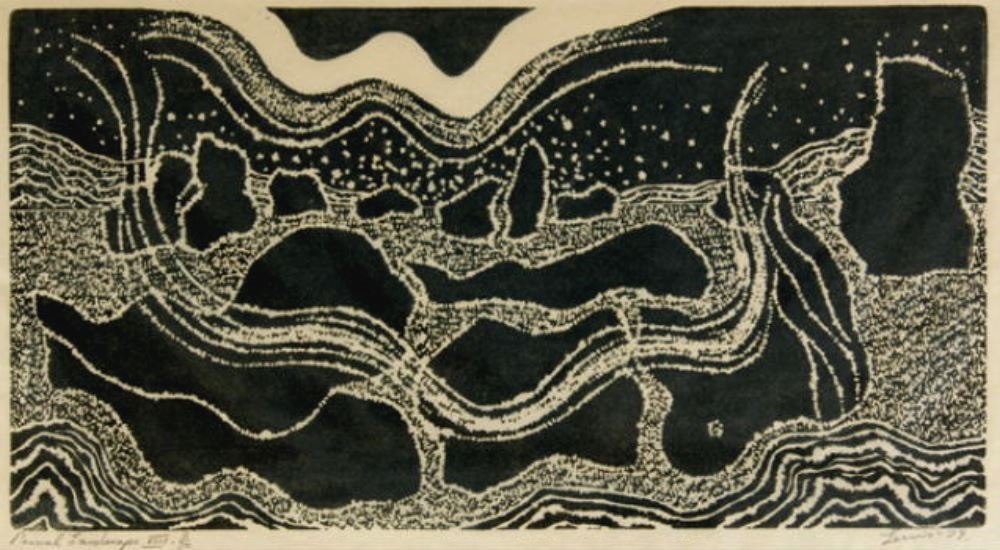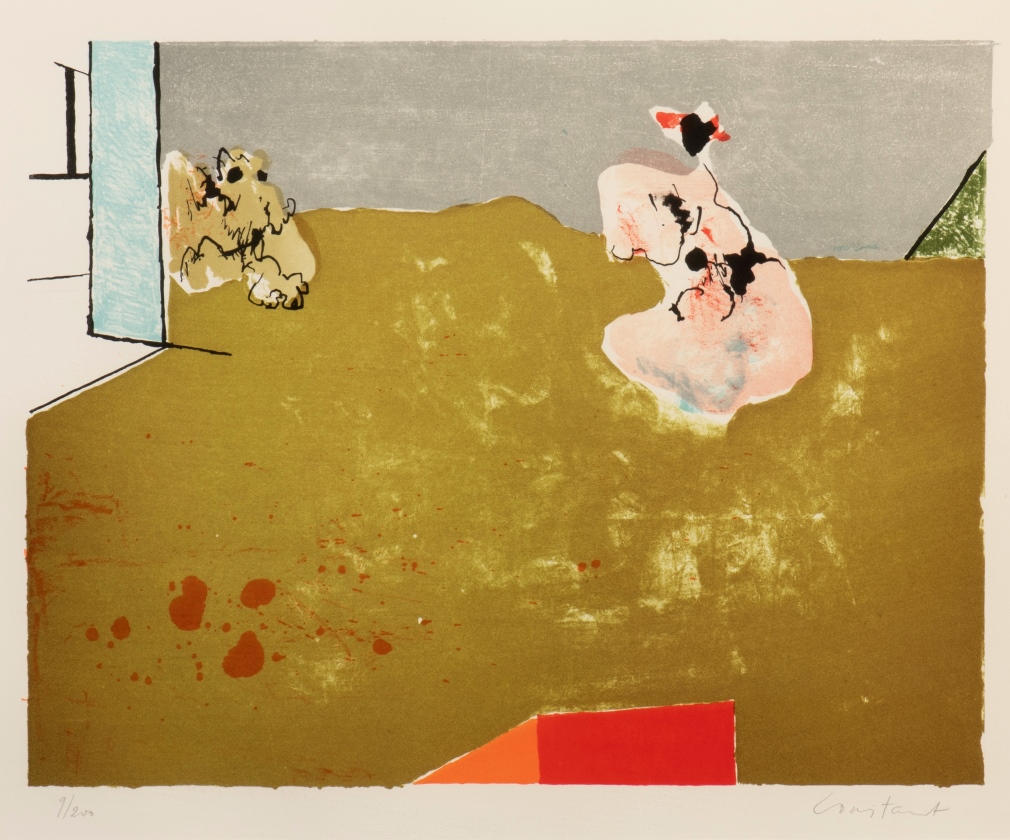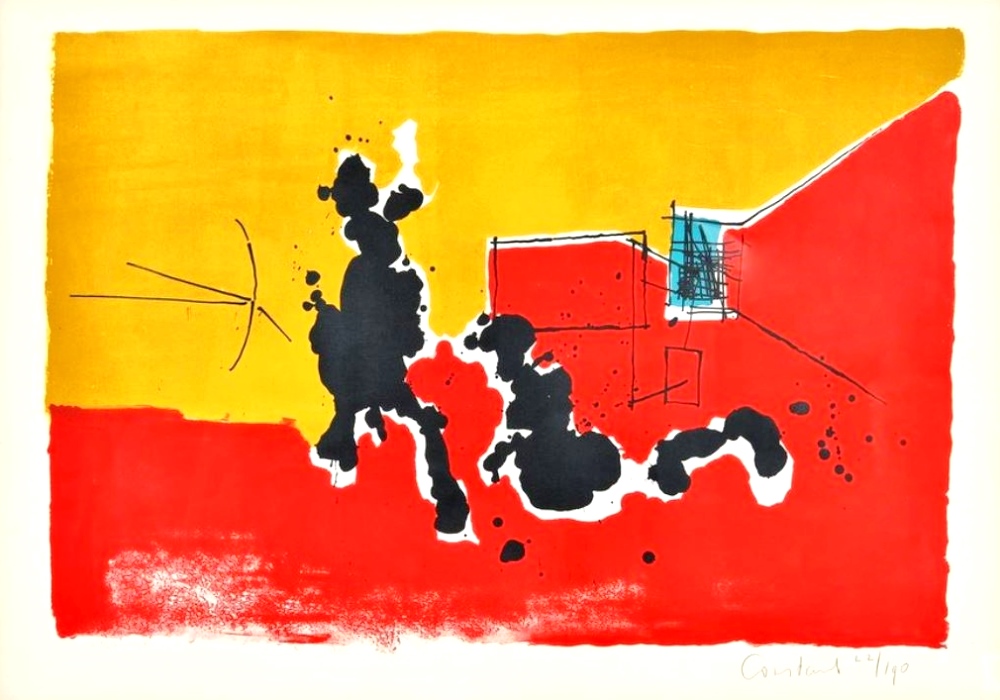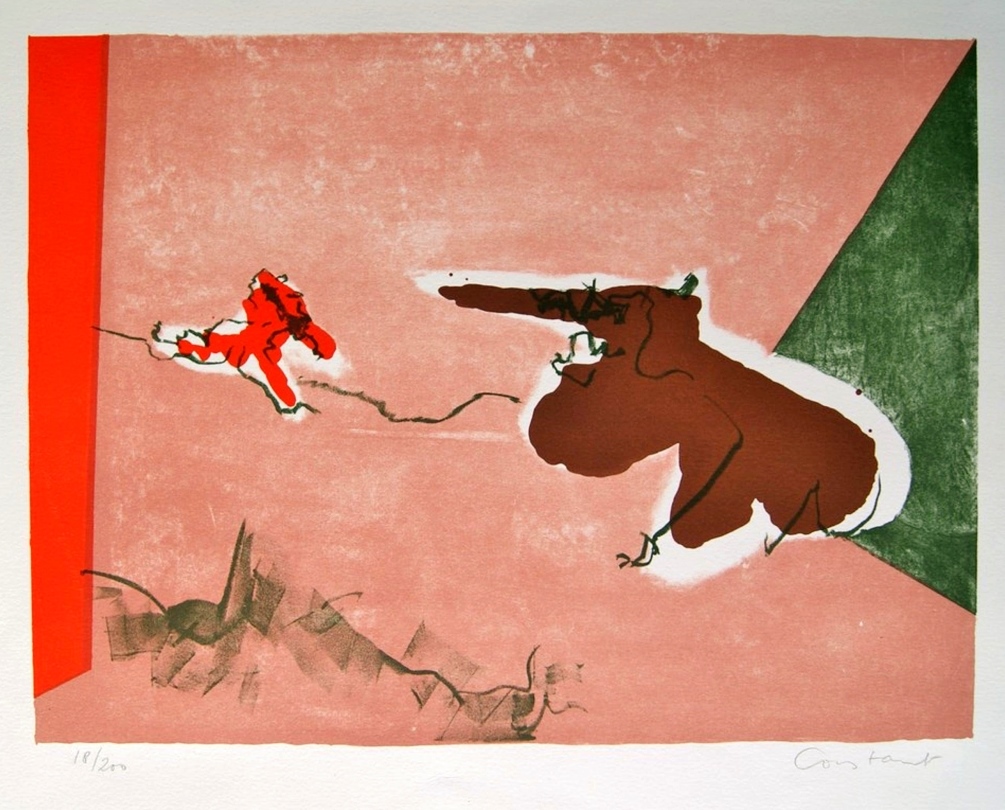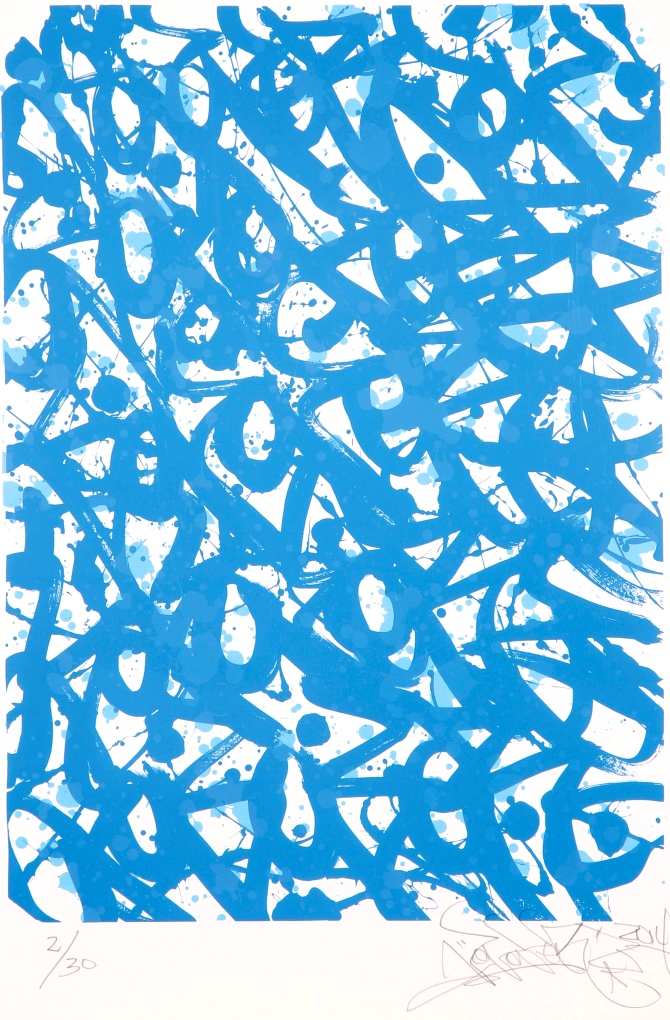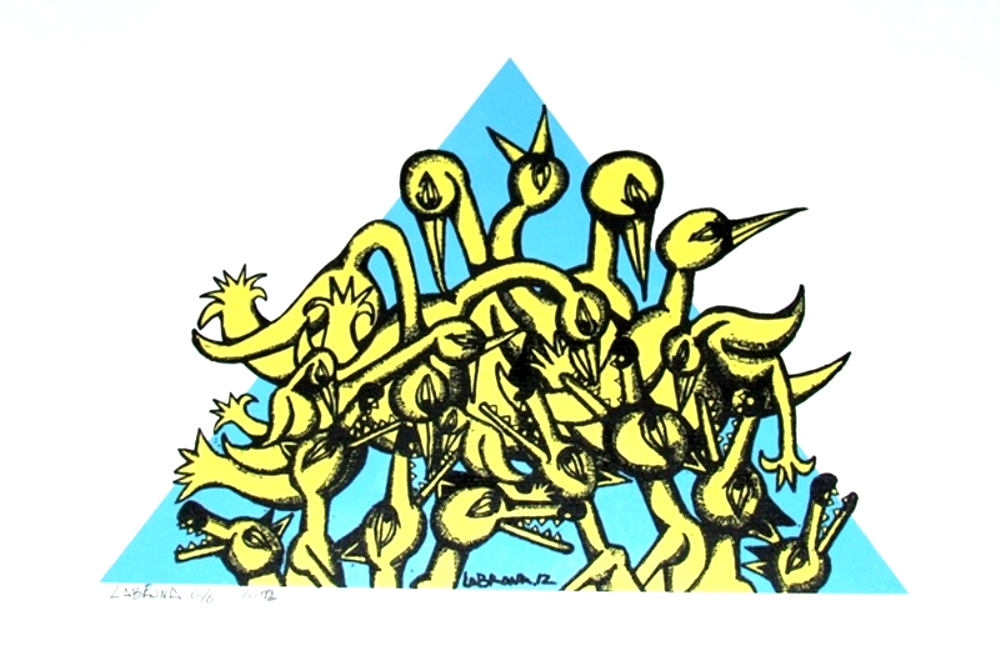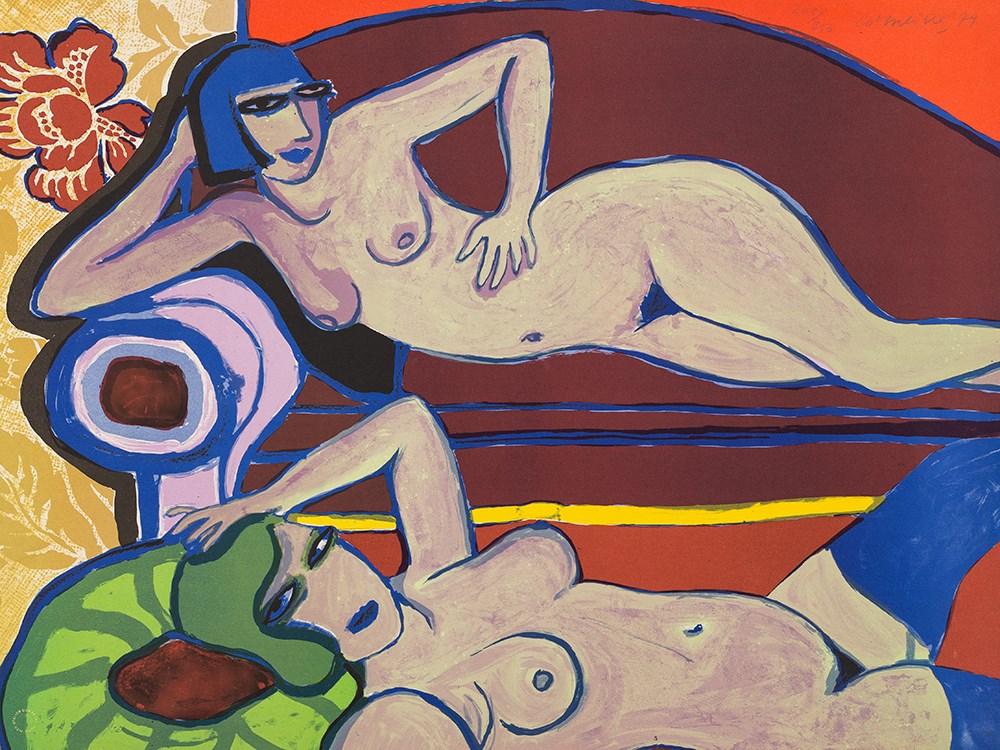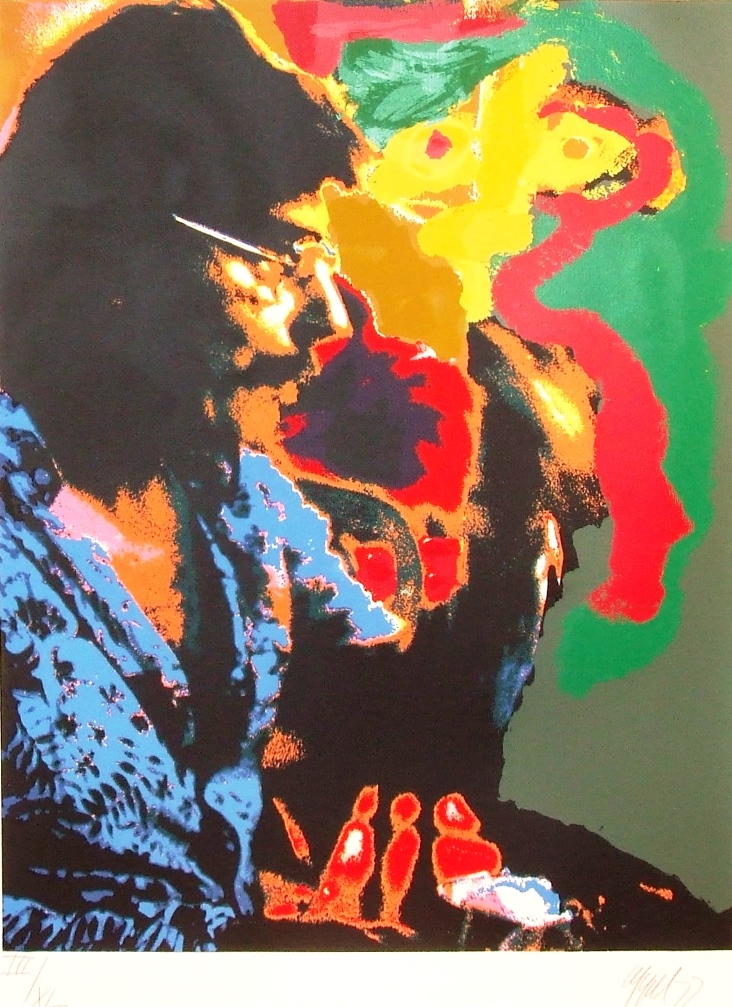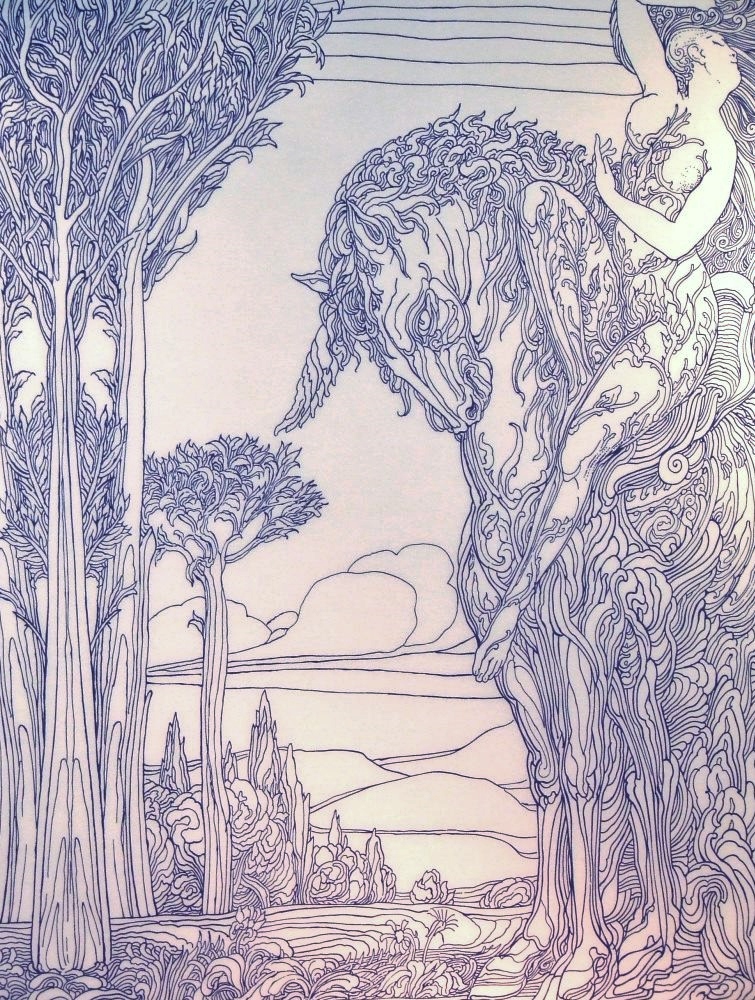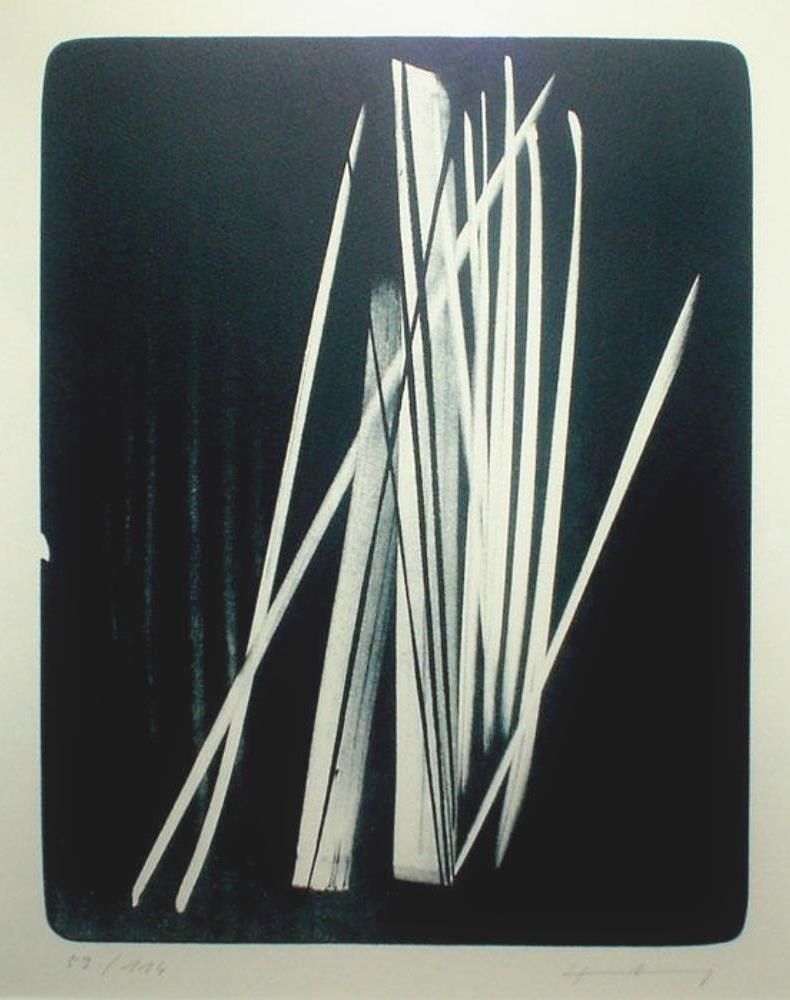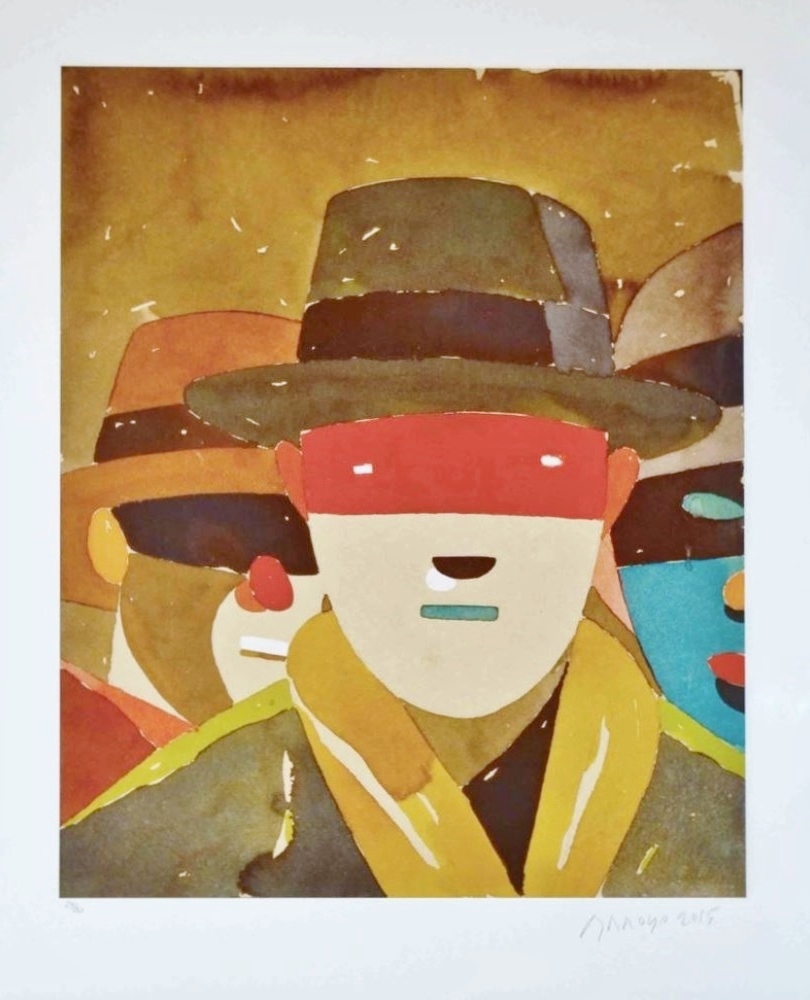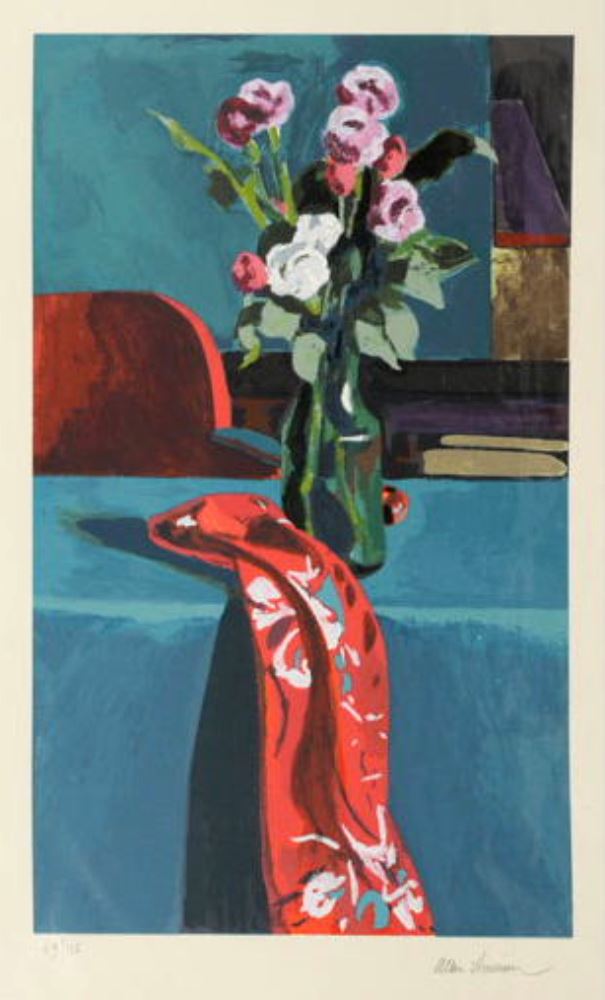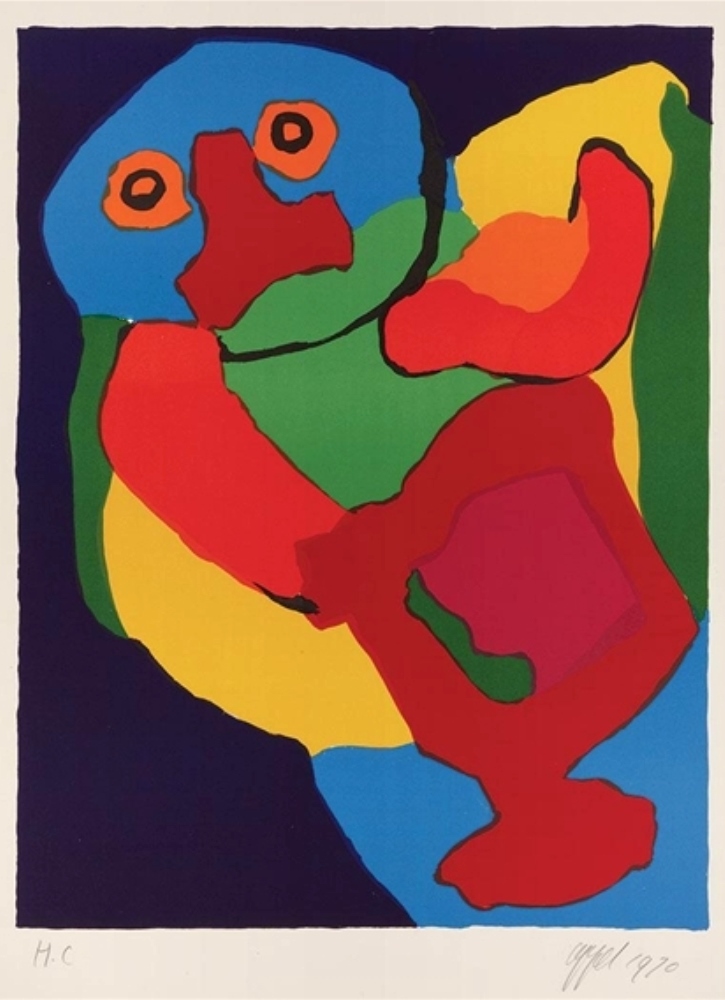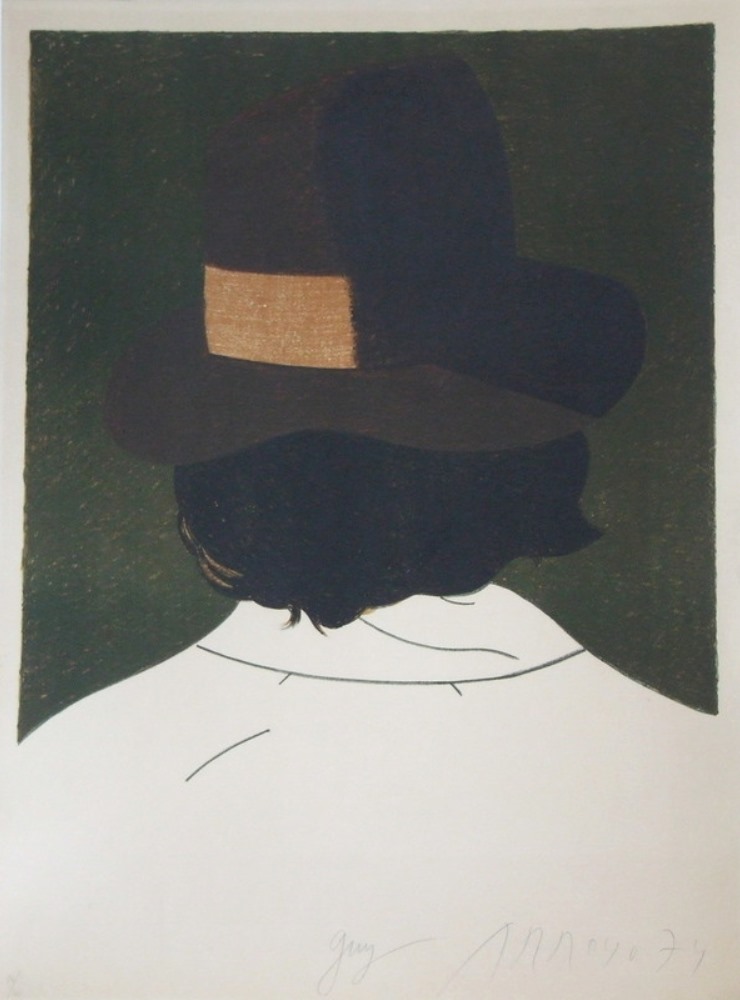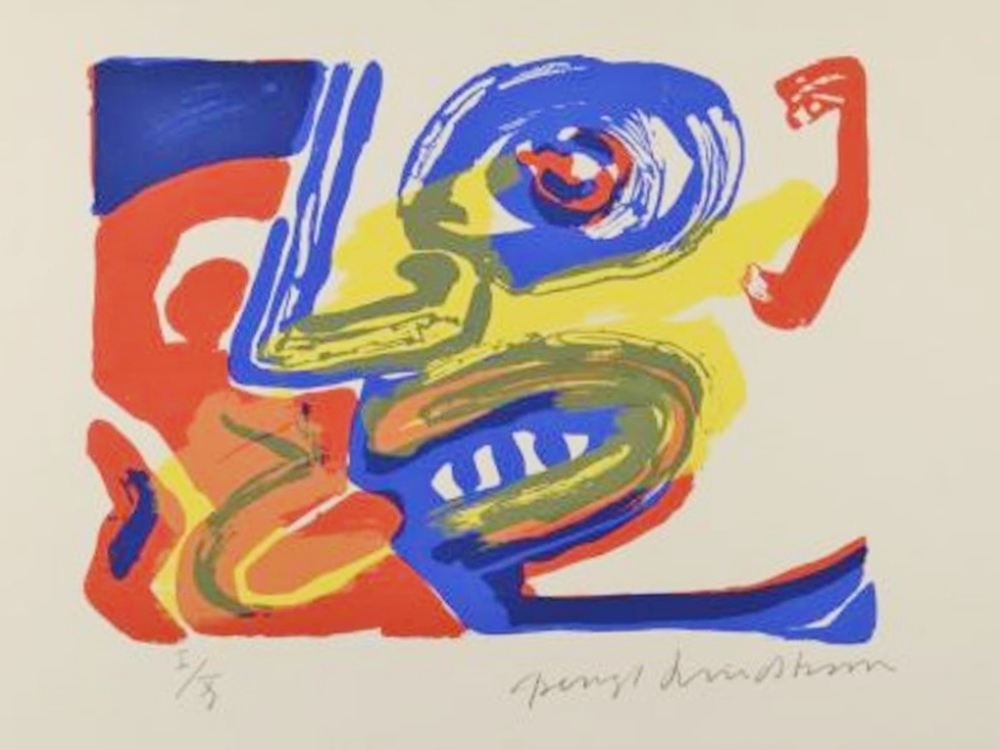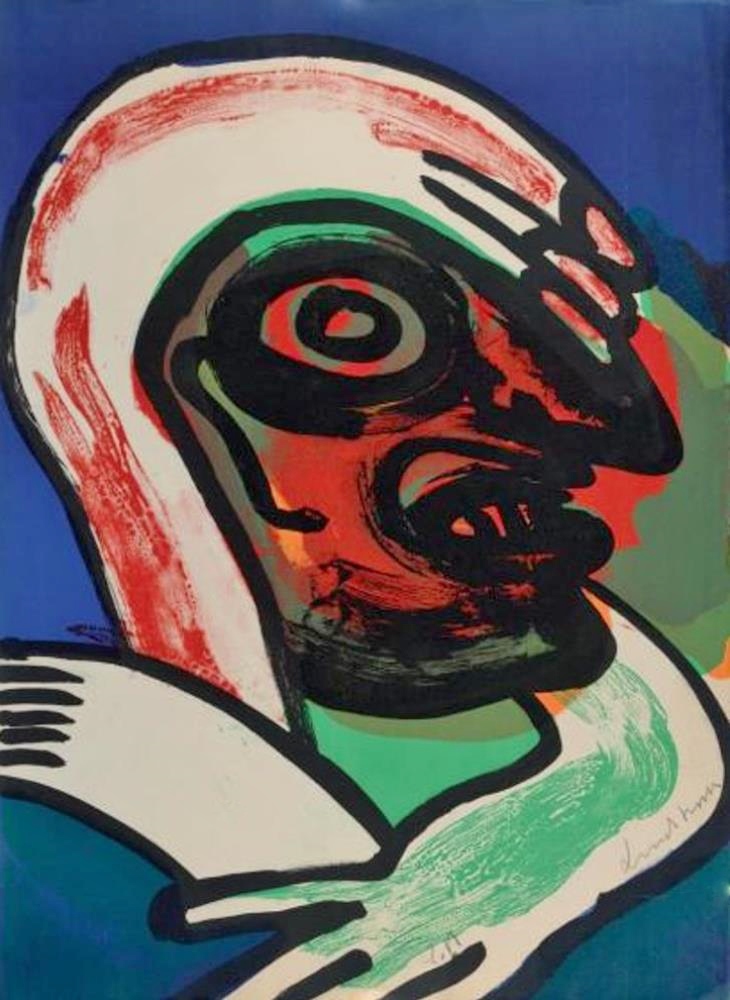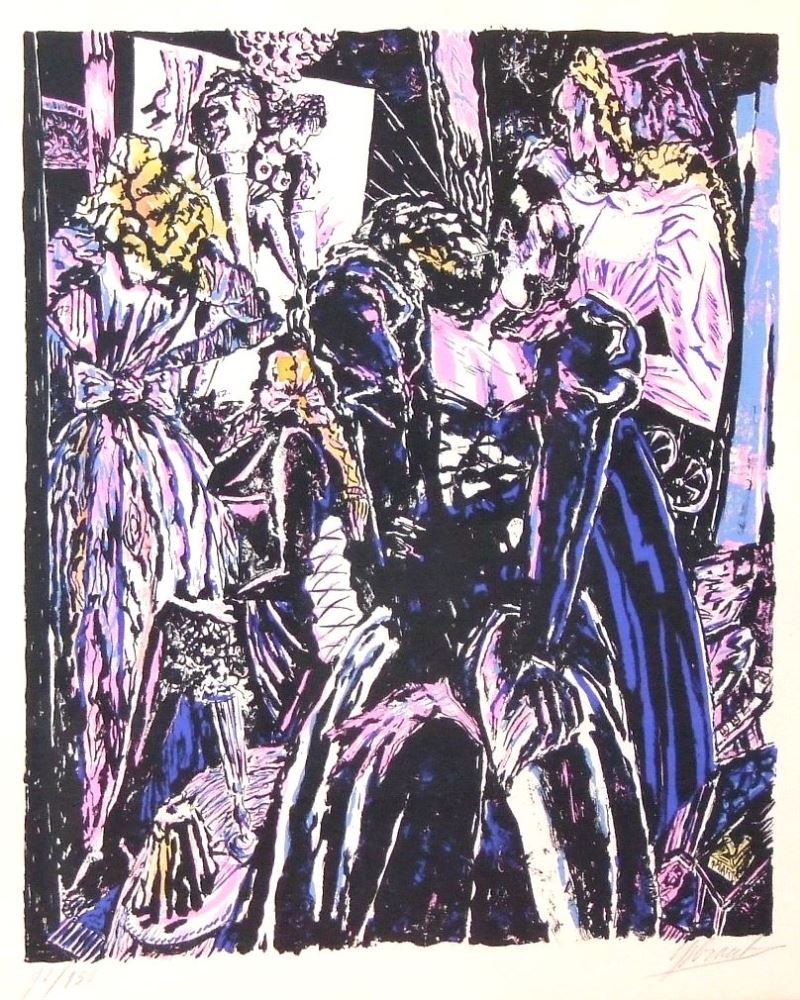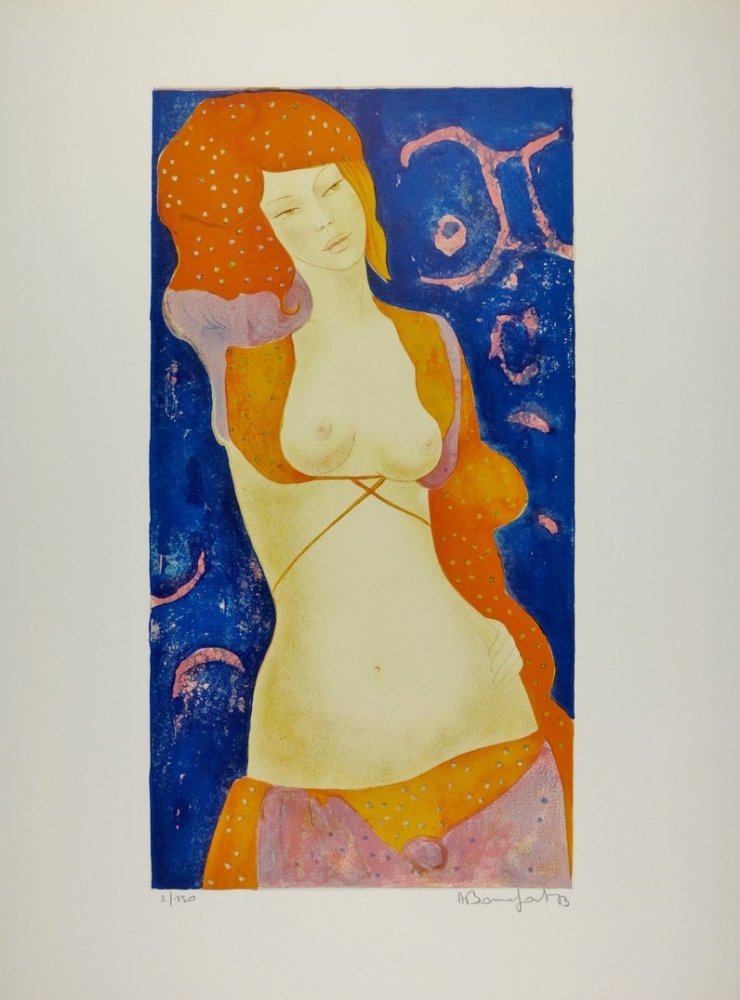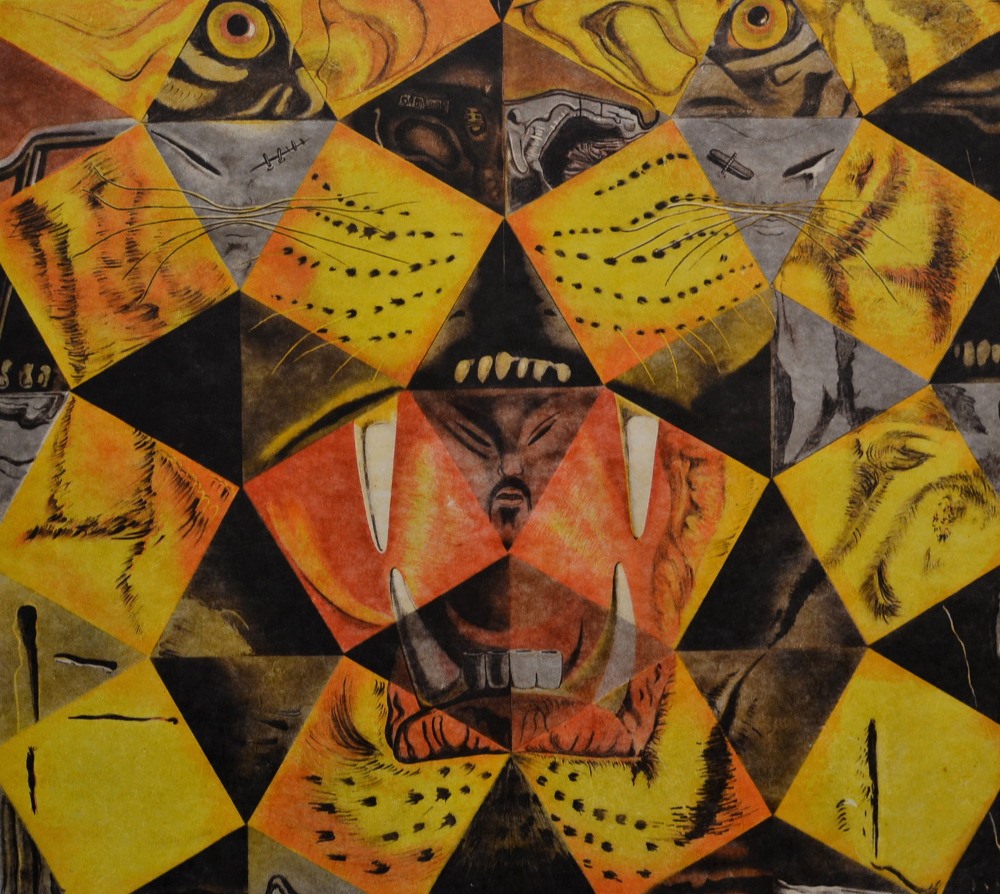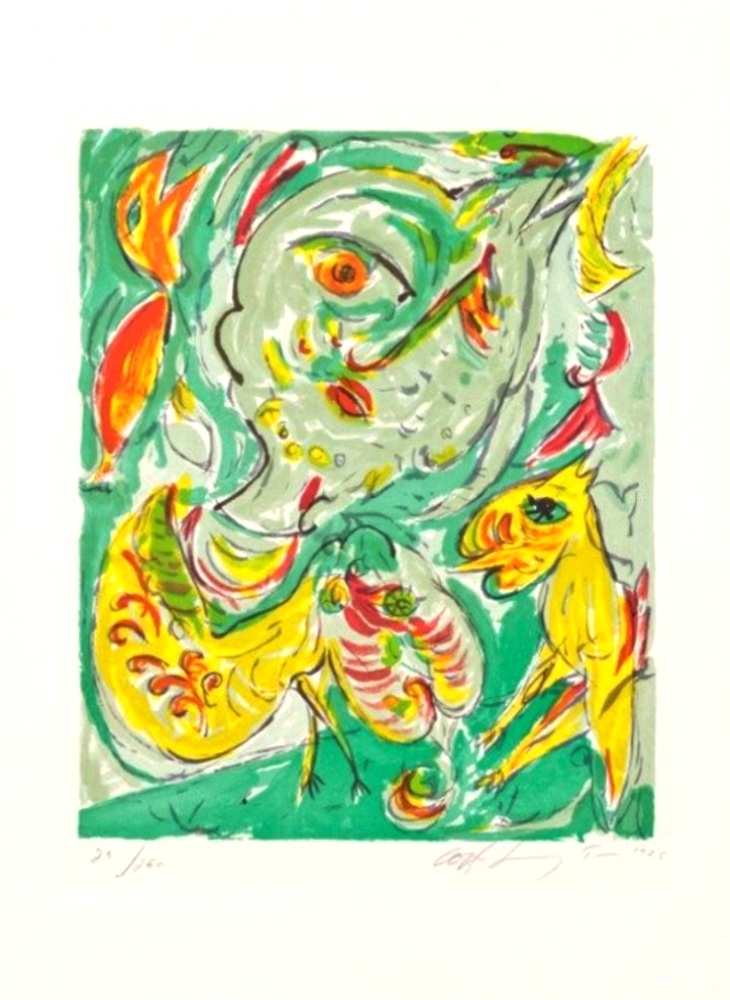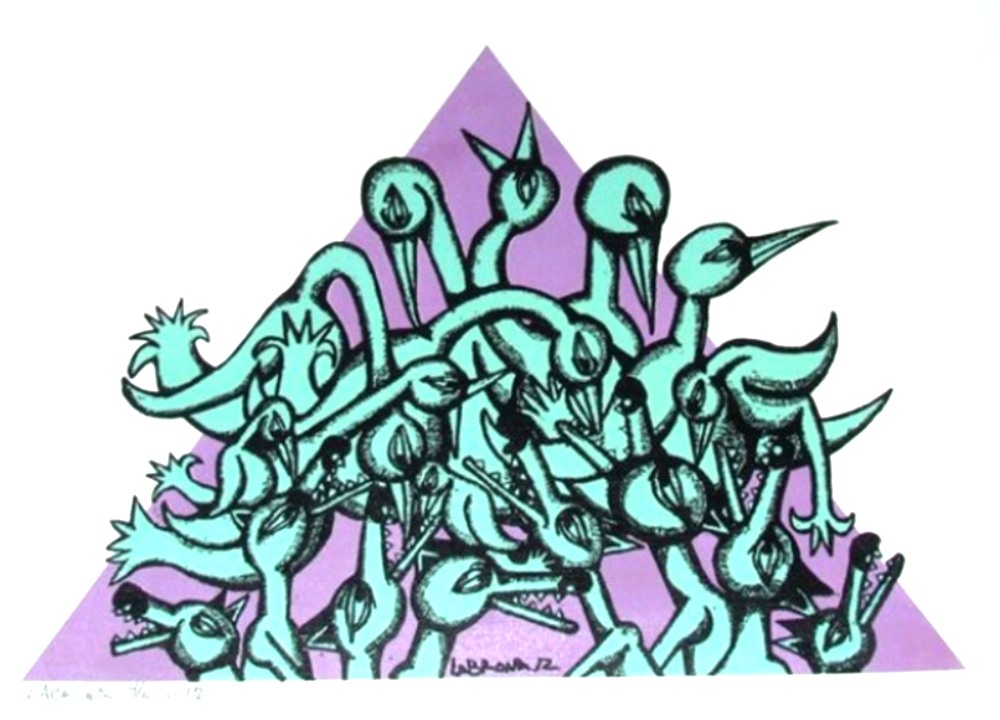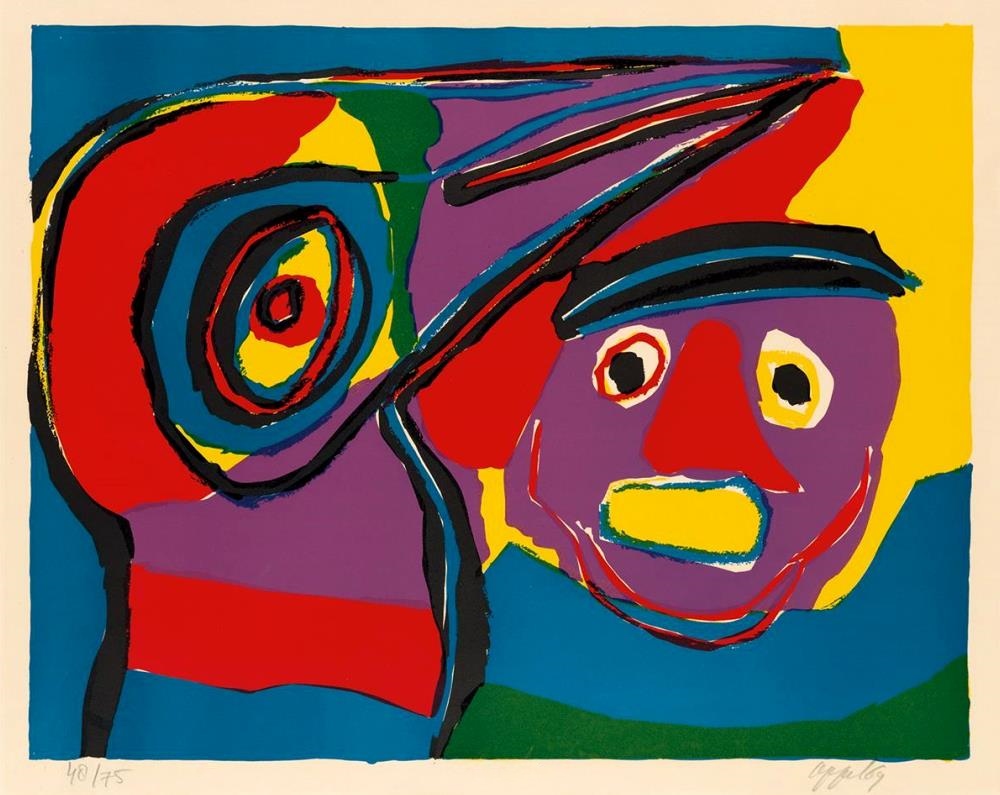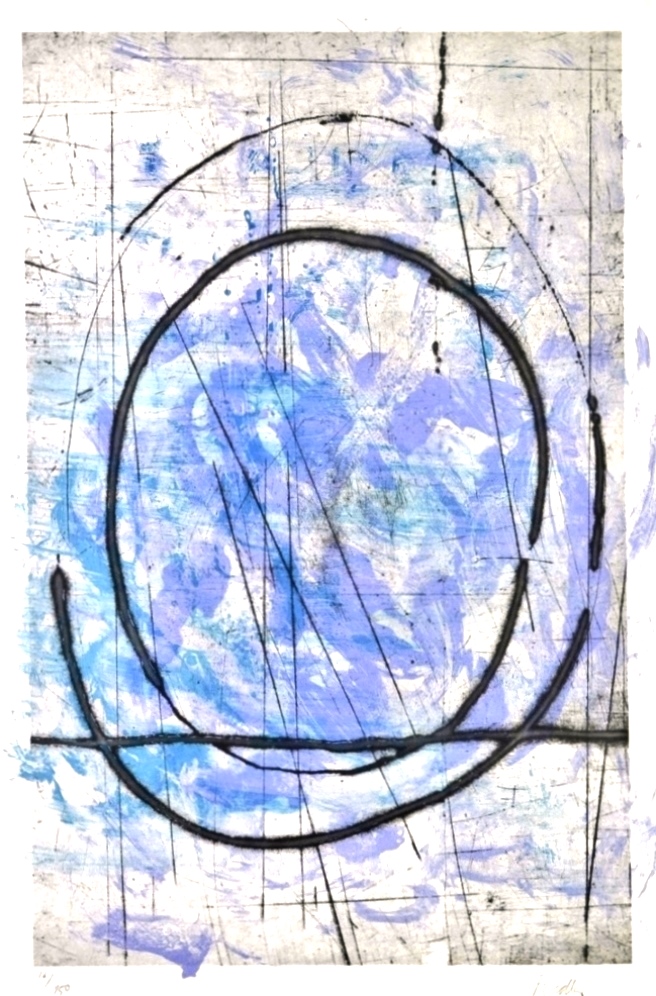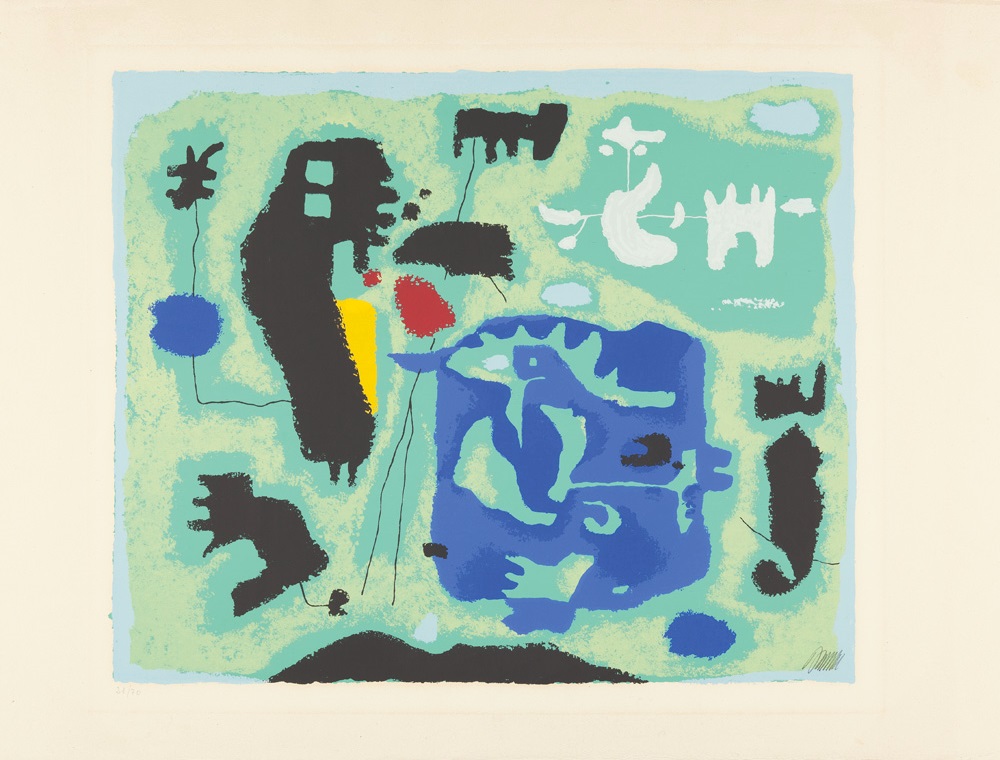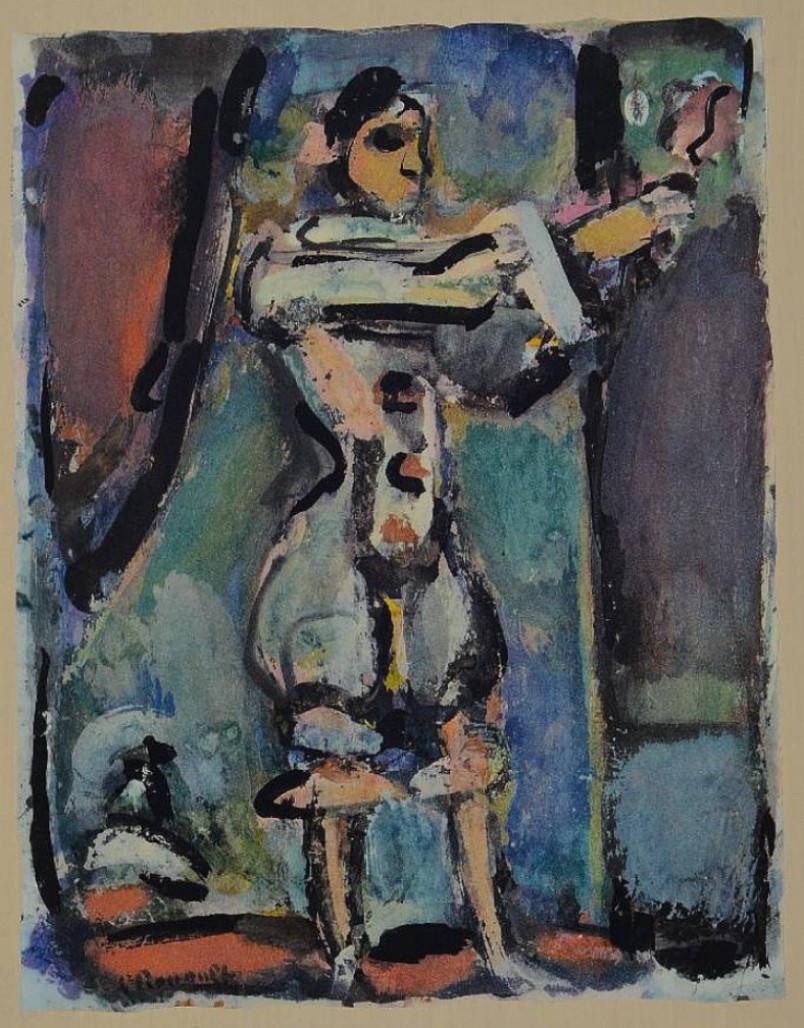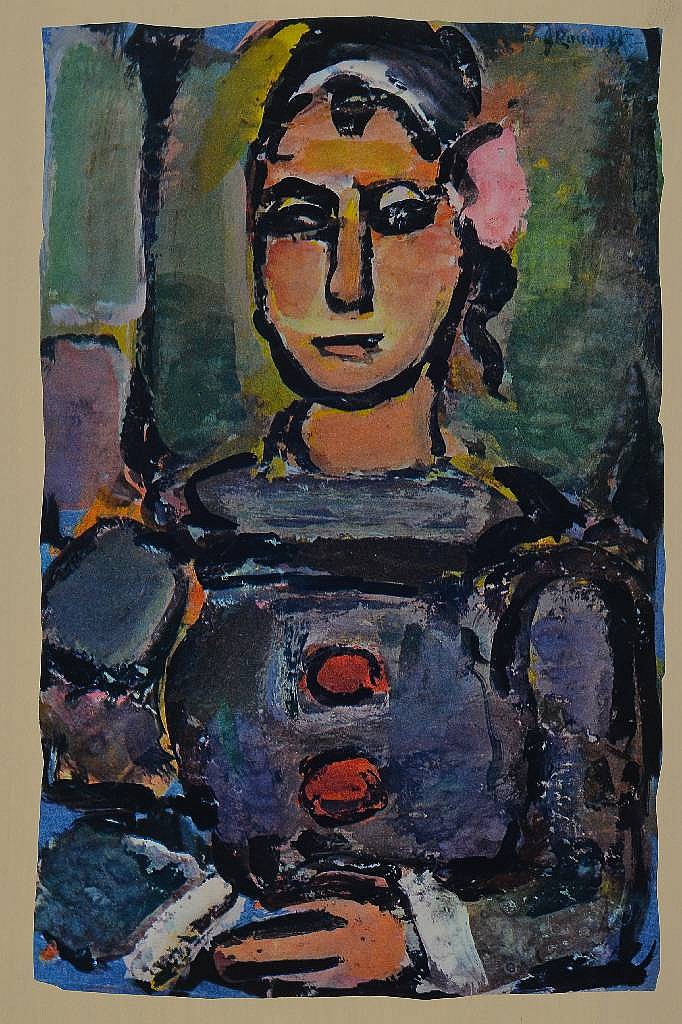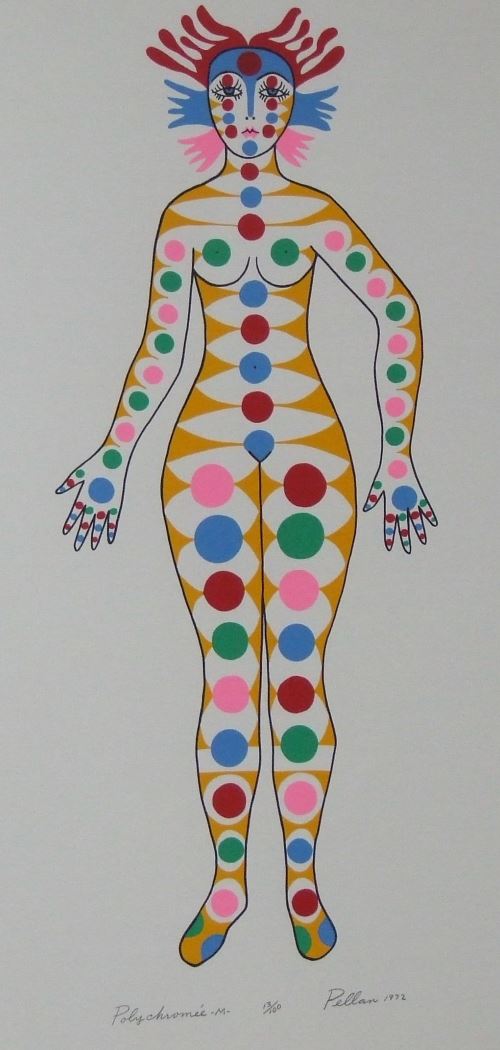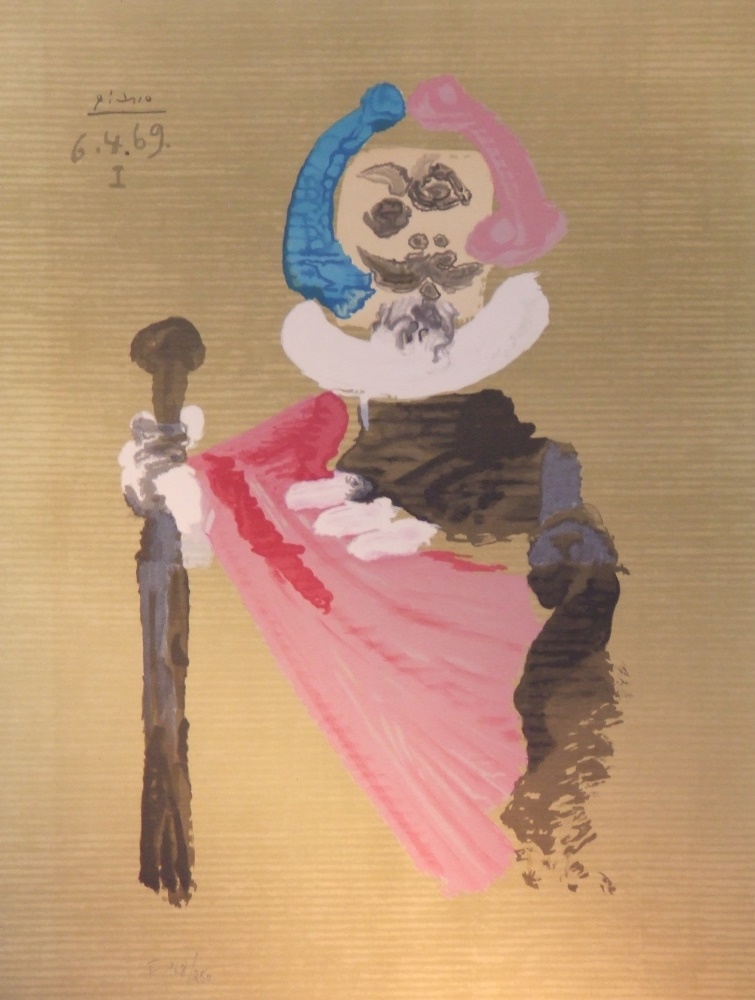Planographic printing.
Serigraphy or and Silk-screen.
Serigraphy, also called silk-screening or screen printing, is the oldest form of printmaking, first appearing in China during the Song Dynasty (960–1279 AD).
In the 1930s, a group of New York artists began experimenting with silkscreening and coined the term “serigraphy” [a combination of the Latin word seri (silk) and the Greek word graphein (to write or draw)] to describe their work. The term “serigraphy’ distinguished their original prints from those produced for commercial purposes. Andy Warhol is generally regarded as having popularized the serigraph in the 1960s.
Serigraph as original artworks
Unlike the reproduction print which is a colour image of an existing artwork, the serigraph is an original artwork.
To produce an original serigraph, the artist creates the master image which is transferred by stencil or photo emulsion to a mesh screen stretched across a wooden frame. The screen is laid directly onto a piece of paper and pigment is pressed through the mesh to create the image. Each colour requires a separate layer, or “pull”, and the final serigraph may be the result of tens of pulls, layered on top of each other. A single series may take months to produce.
In limited edition runs, the master image is marked or destroyed to prevent further additions to the series.
C-Print or Chromogenic print
A chromogenic print, also known as a silver halide print, or a dye coupler print, is a photographic print made from a color negative, transparency, or digital image, and developed using a chromogenic process.
They are composed of three layers of gelatin, each containing an emulsion of silver halide, which is used as a light-sensitive material, and a different dye coupler of subtractive color which together, when developed, form a full-color image.
The colour negative or slide is exposed to Chromogenic photographic paper (wet process paper) that contains three emulsion layers, each of which is sensitised to a different primary colour. After the image has been exposed it is submerged in a chemical bath, where each layer reacts to the chemicals to create a full-colour image. Because the chemicals are so complex, the image continues to react even after the process is completed. The chemicals are also extremely sensitive to water, light, and heat, making it difficult to protect C-prints from deterioration.
‘C-type’ was originally the trademark used by photographic company Kodak for the paper they used for making prints from colour negatives, but it is now standardly applied to all colour photographic prints.
Stencil
Stenciling produces an image or pattern by applying pigment to a surface over an intermediate object with designed gaps in it which create the pattern or image by only allowing the pigment to reach some parts of the surface. The stencil is both the resulting image or pattern and the intermediate object; the context in which stencil is used makes clear which meaning is intended. In practice, the (object) stencil is usually a thin sheet of material, such as paper, plastic, wood or metal, with letters or a design cut from it, used to produce the letters or design on an underlying surface by applying pigment through the cut-out holes in the material.
The key advantage of a stencil is that it can be reused to repeatedly and rapidly produce the same letters or design. Although aerosol or painting stencils can be made for one-time use, typically they are made with the intention of being reused. To be reusable, they must remain intact after a design is produced and the stencil is removed from the work surface. With some designs, this is done by connecting stencil islands (sections of material that are inside cut-out “holes” in the stencil) to other parts of the stencil with bridges (narrow sections of material that are not cut out).
Stencil technique in visual art is also referred to as pochoir.
A related technique (which has found applicability in some surrealist compositions) is aerography, in which spray-painting is done around a three-dimensional object to create a negative of the object instead of a positive of a stencil design. This technique was used in cave paintings dating to 10,000 BC, where human hands were used in painting handprint outlines among paintings of animals and other objects. The artist sprayed pigment around his hand by using a hollow bone, blown by mouth to direct a stream of pigment.
Stencils have also become popular for graffiti, since stencil art using spray-paint can be produced quickly and easily. These qualities are important for graffiti artists where graffiti is illegal or quasi-legal, depending on the city and stenciling surface.
The extensive lettering possible with stencils makes it especially attractive to political artists. For example, the anarcho-punk band Crass used stencils of anti-war, anarchist, feminist and anti-consumerist messages in a long-term graffiti campaign around the London Underground system and on advertising billboards.
There has been a semi-recent trend in making multi-layered stencils with different shades of grey for each layer creating a more detailed stenciled image. Also well known for their use of stencil art is Blek le Rat and Jef aerosol from France, British artist Banksy, New York artist, world traveling artist Tavar Zawacki f.k.a. ‘ABOVE’, Shepard Fairey’s OBEY, and Pirate & Acid from Hollywood, California.
A stencil used in airbrushing called a frisket is pressed directly on the artwork. It can be used control or contain overspray, create sharp or complex shapes, but is not designed to be used more than once.
Mimeography
Screen printing also uses a stencil process, as does mimeography. The masters from which mimeographed pages are printed are often called “stencils”. Stencils can be made with one or many colour layers using different techniques, with most stencils designed to be applied as solid colours. During screen printing and mimeography, the images for stenciling are broken down into color layers. Multiple layers of stencils are used on the same surface to produce multi-colored images.
